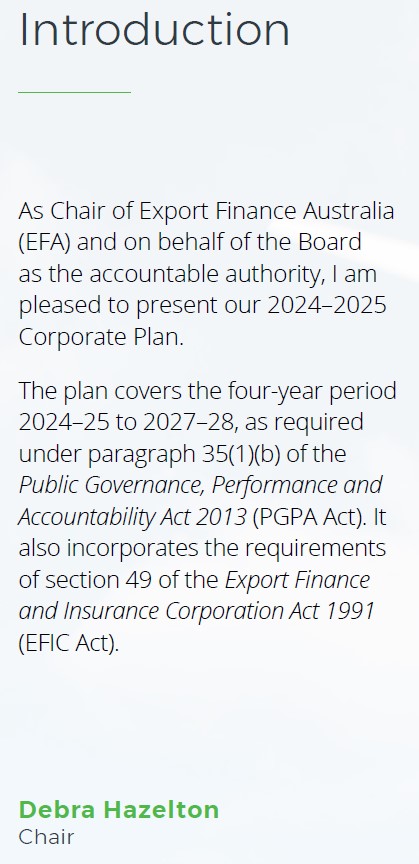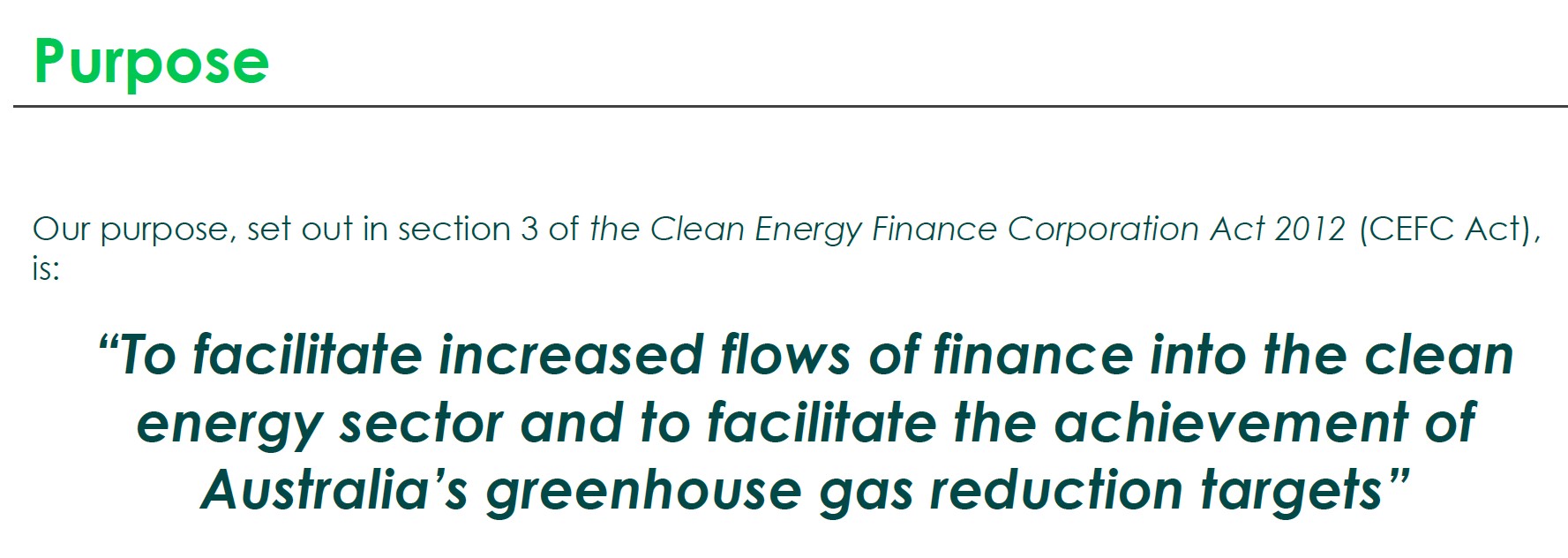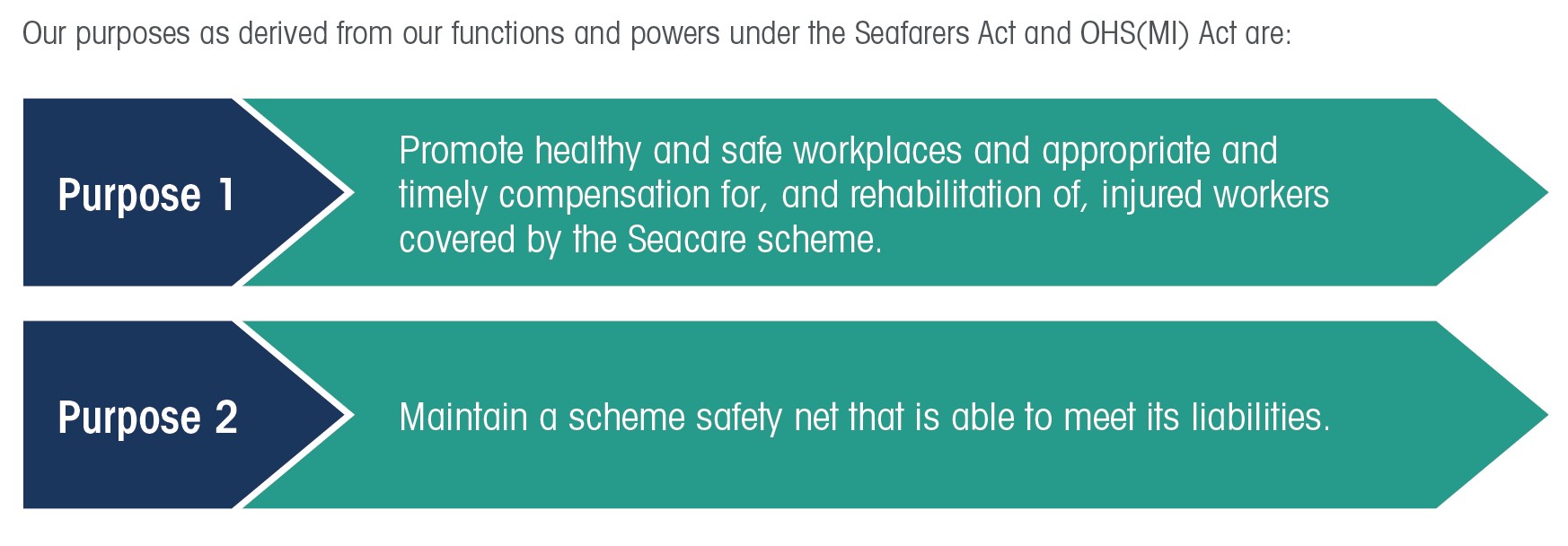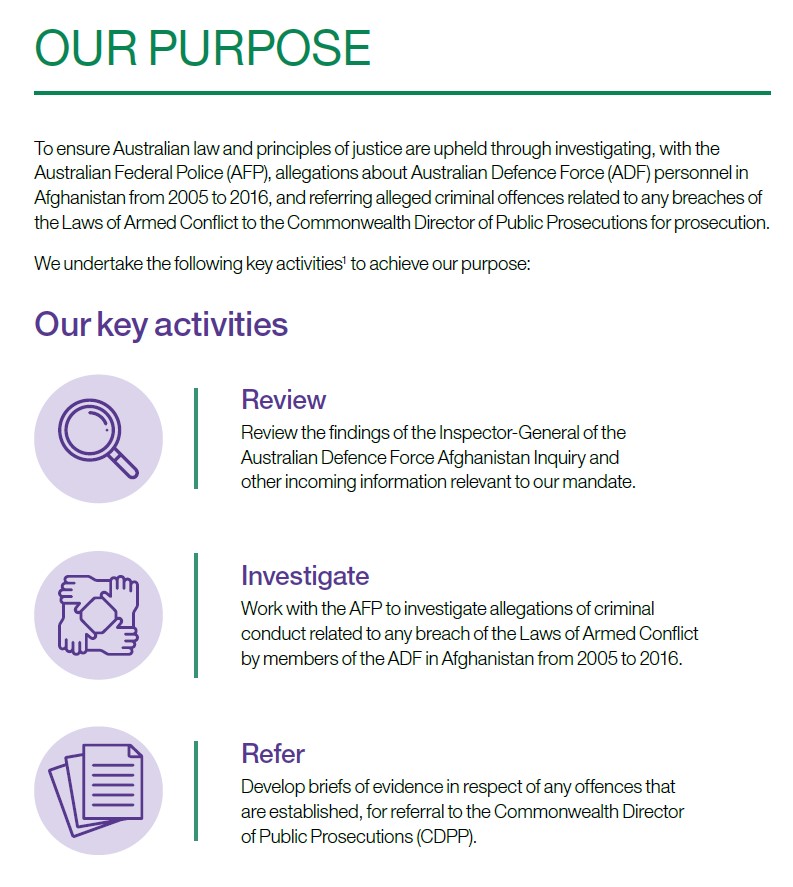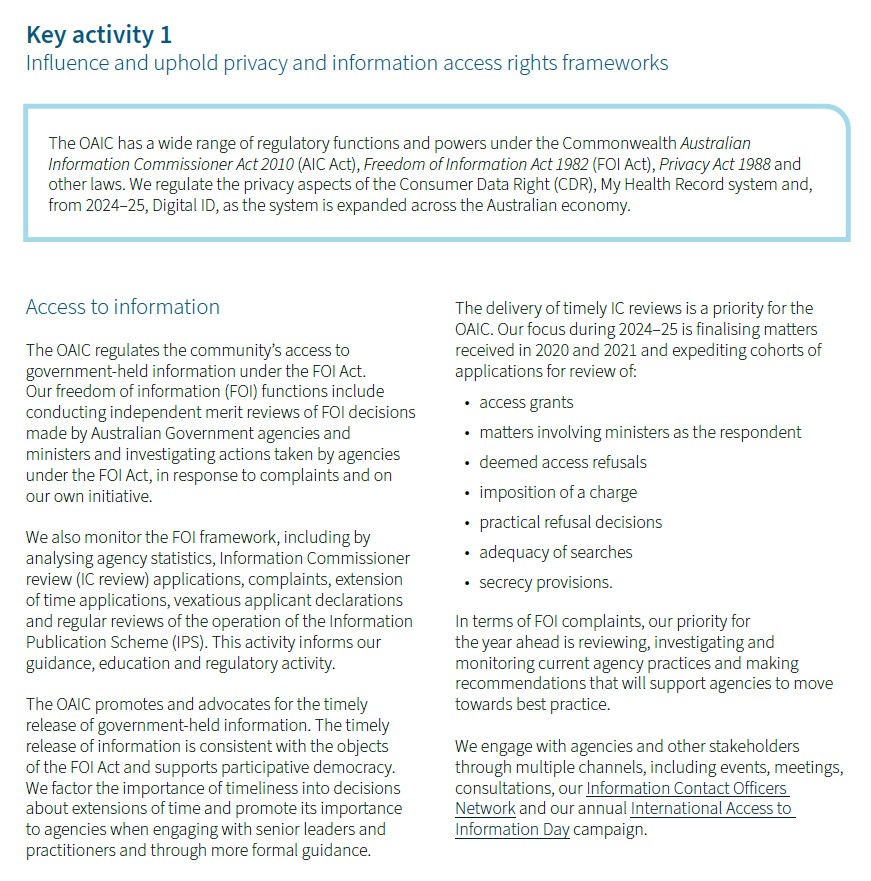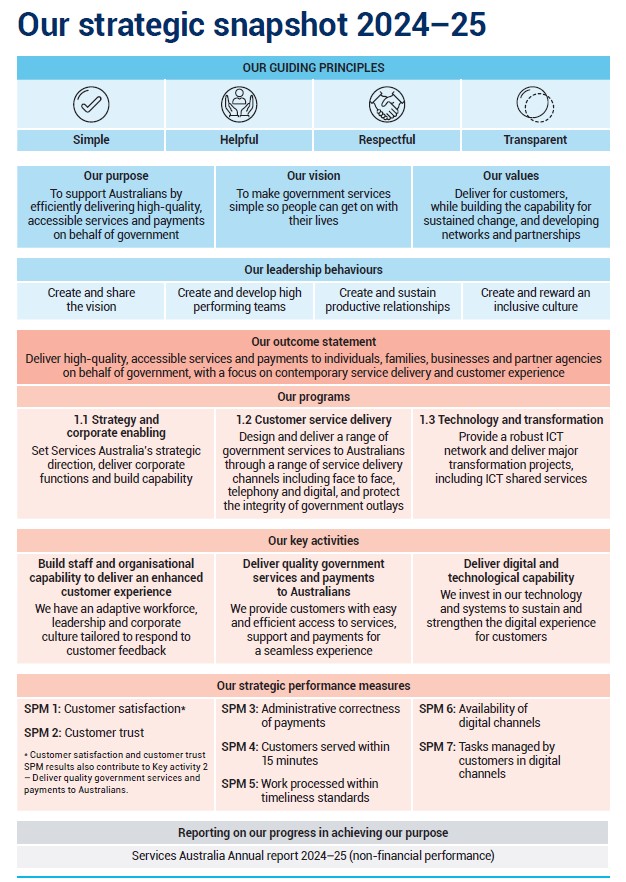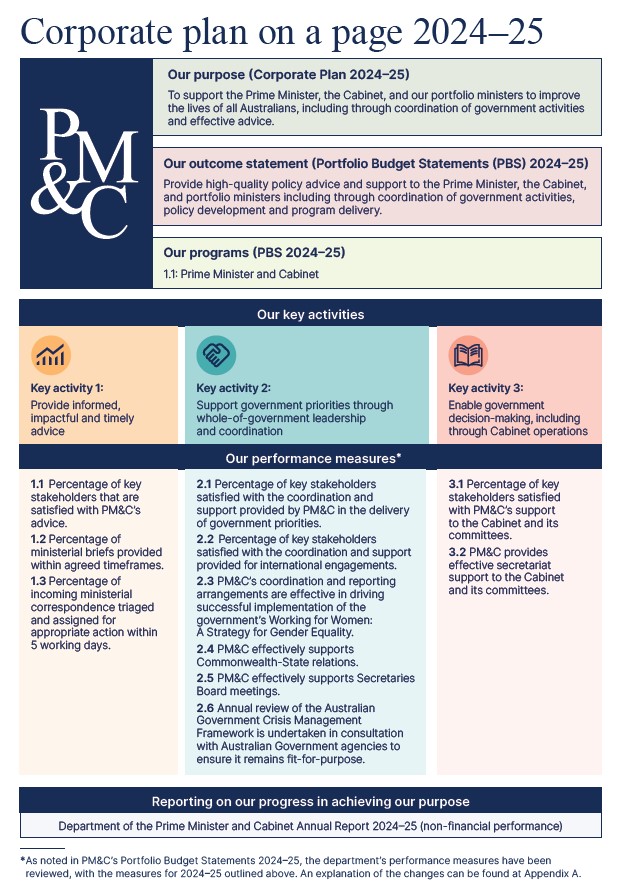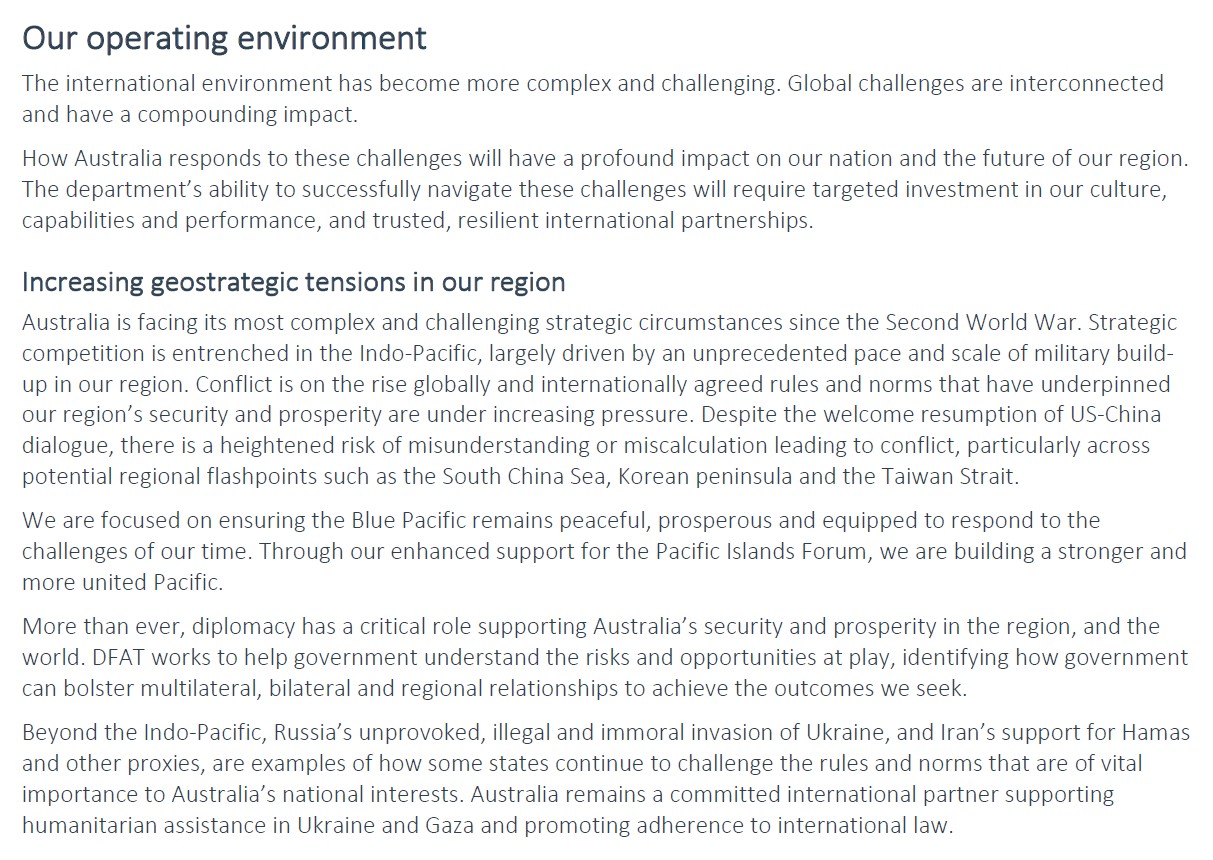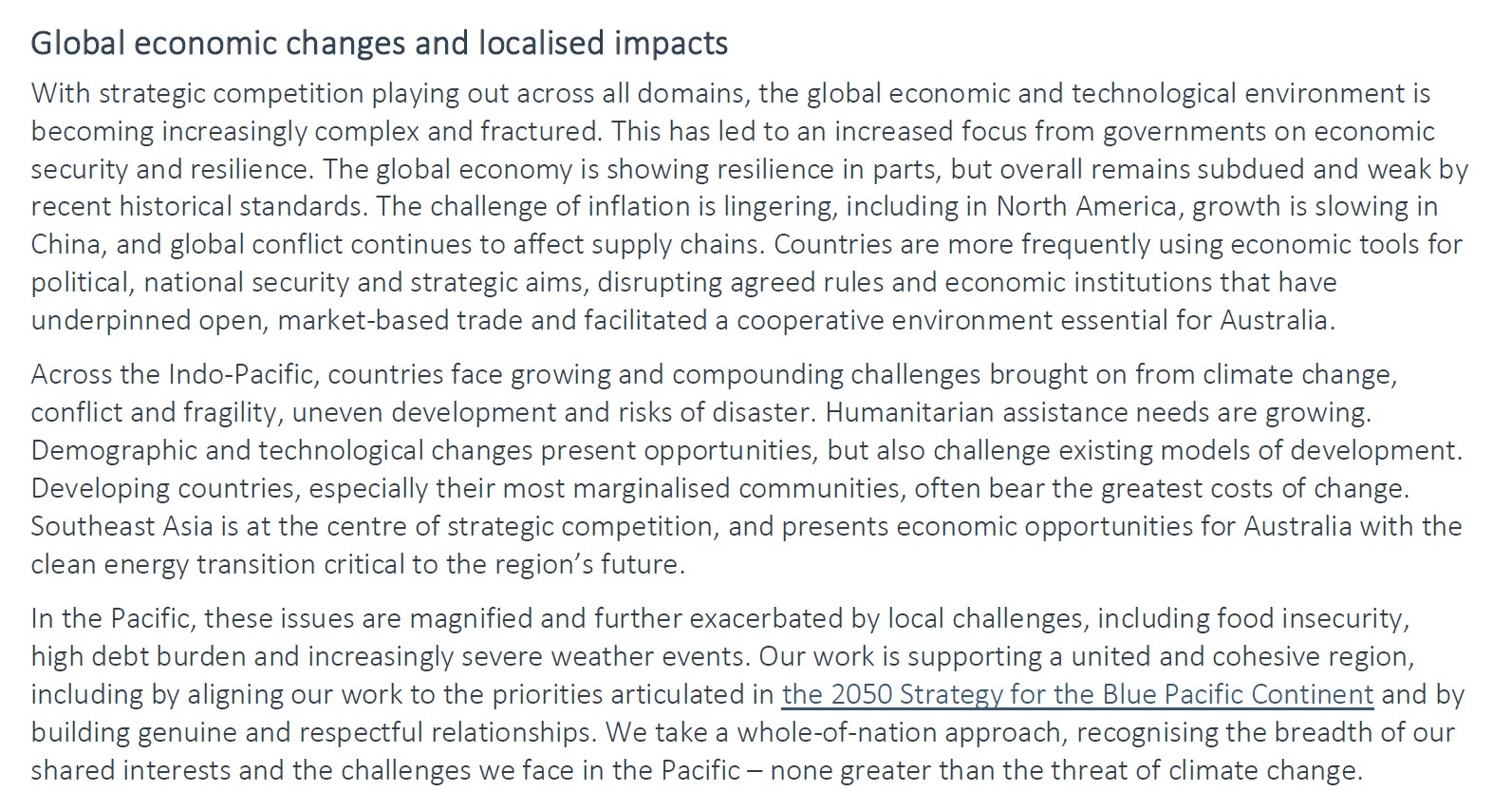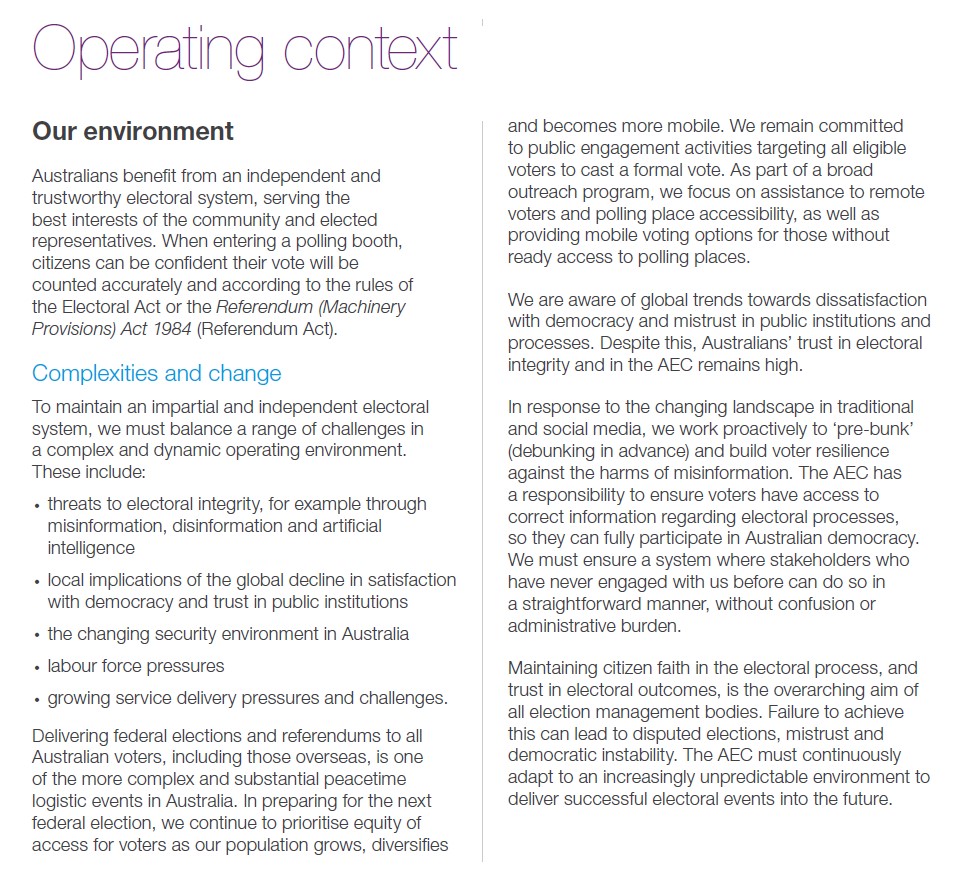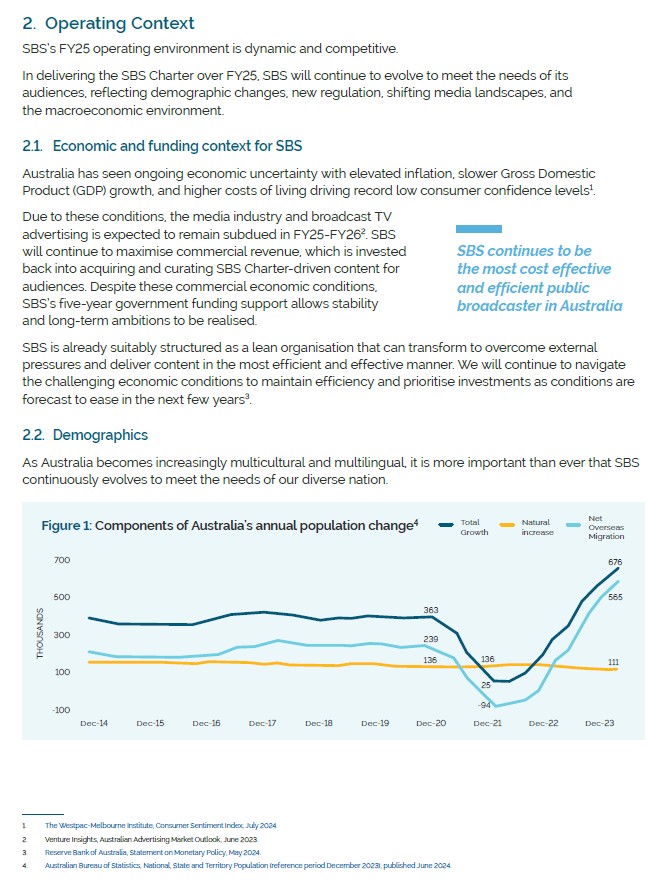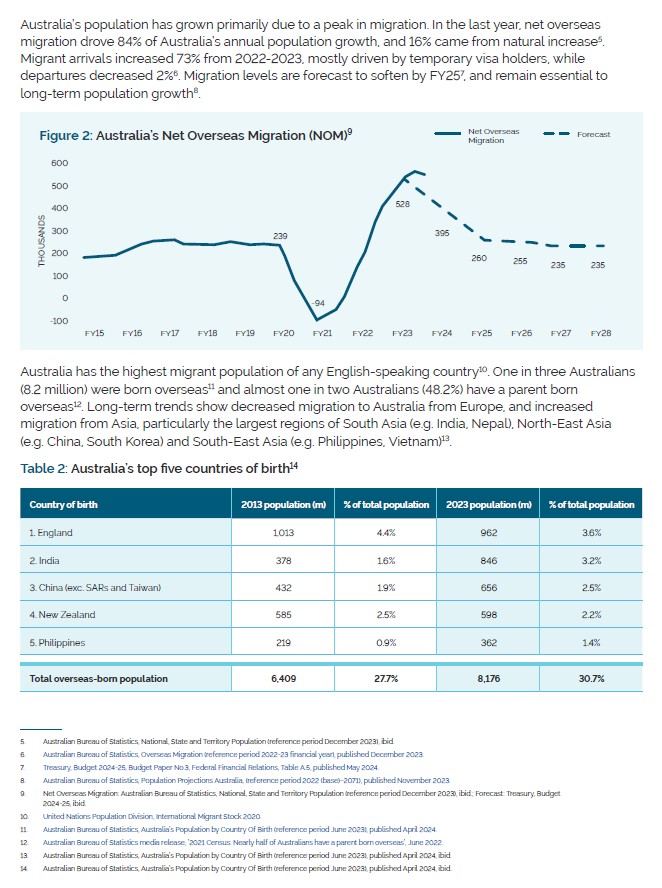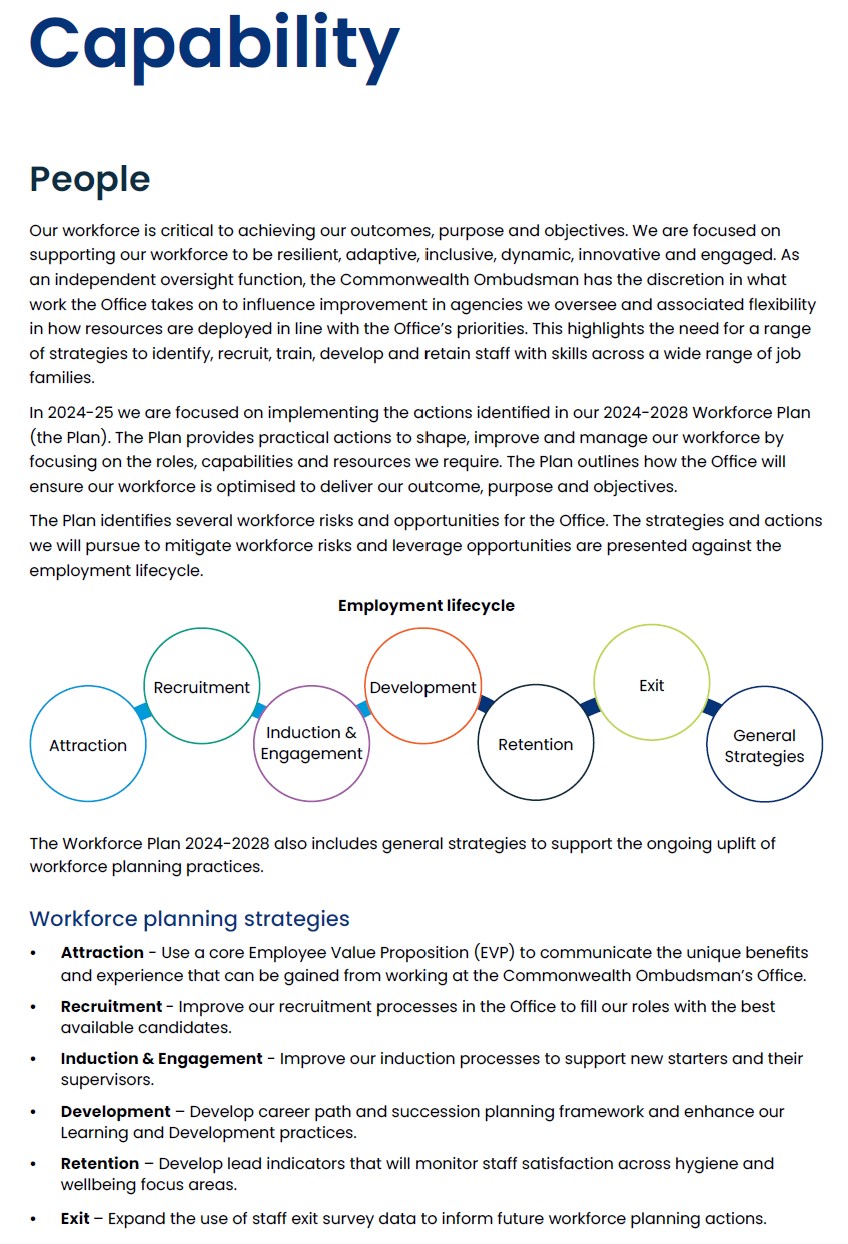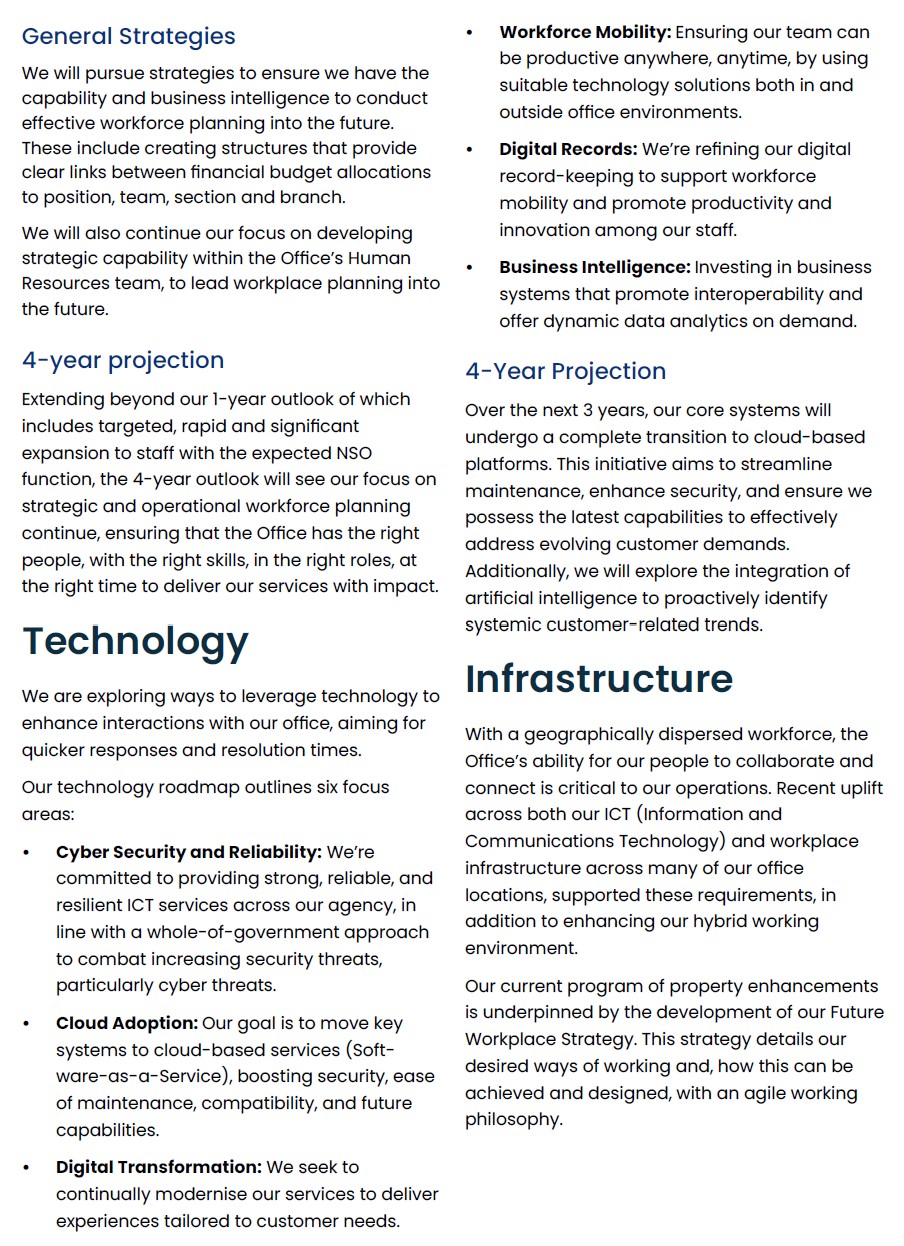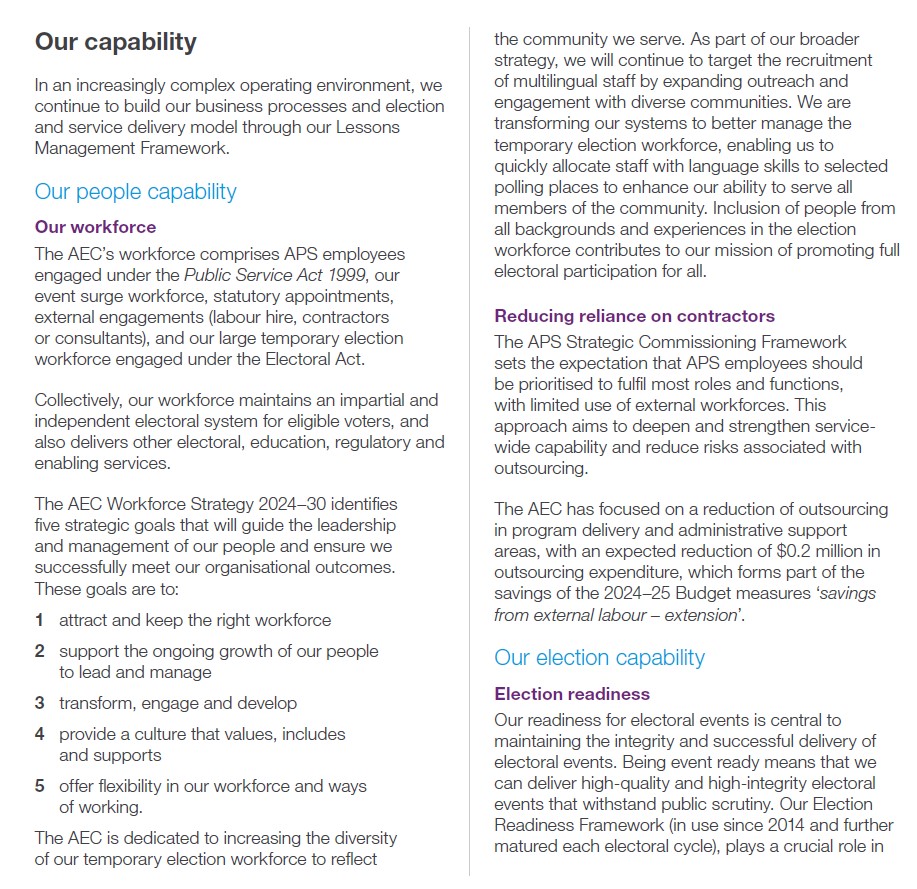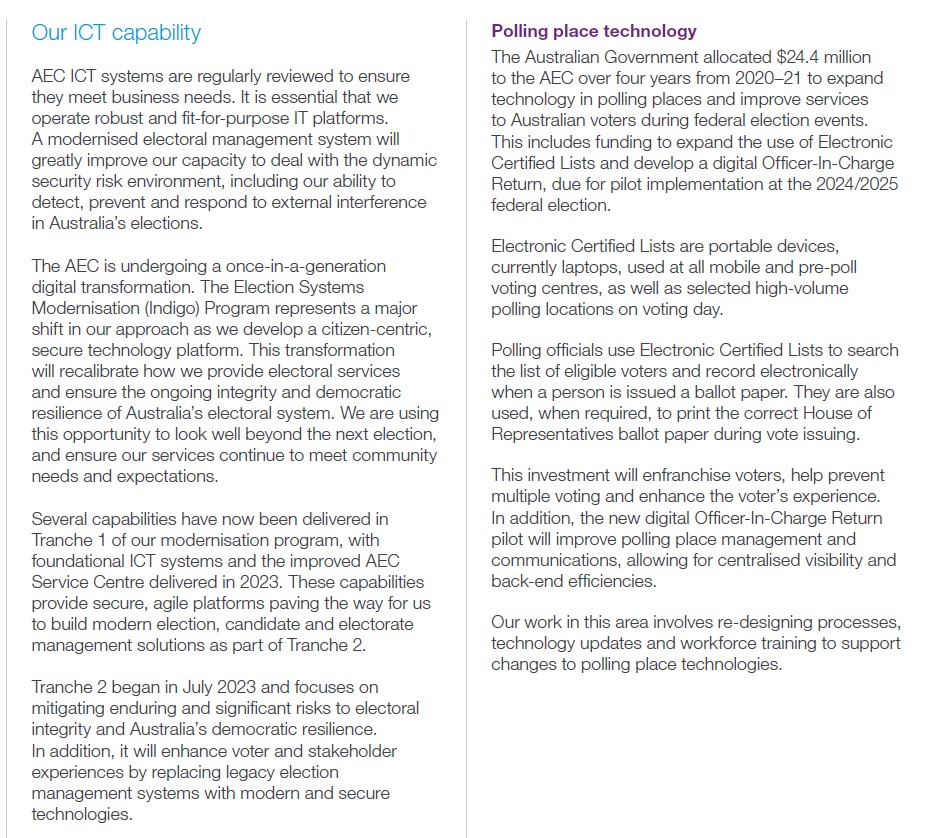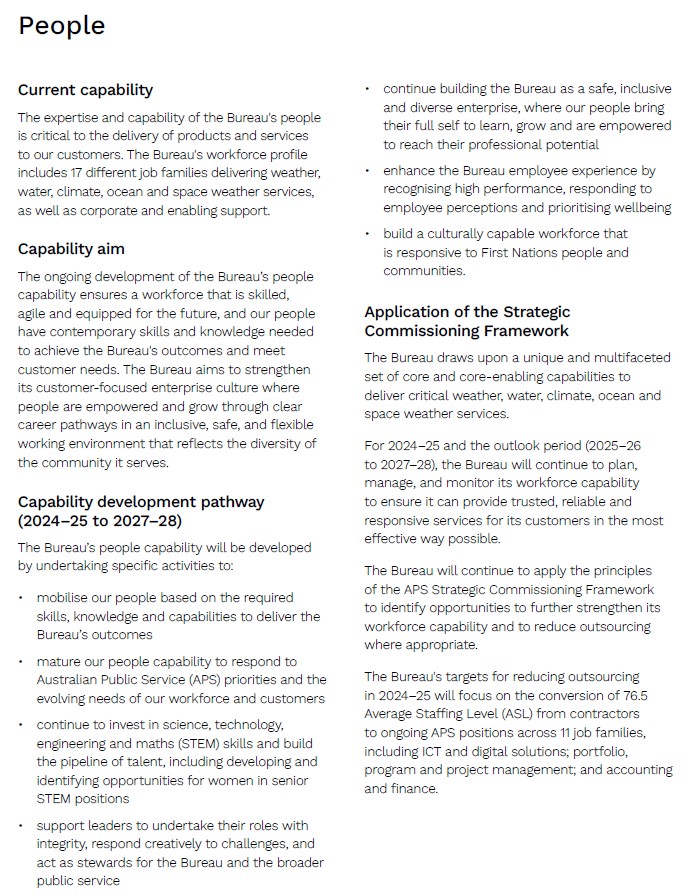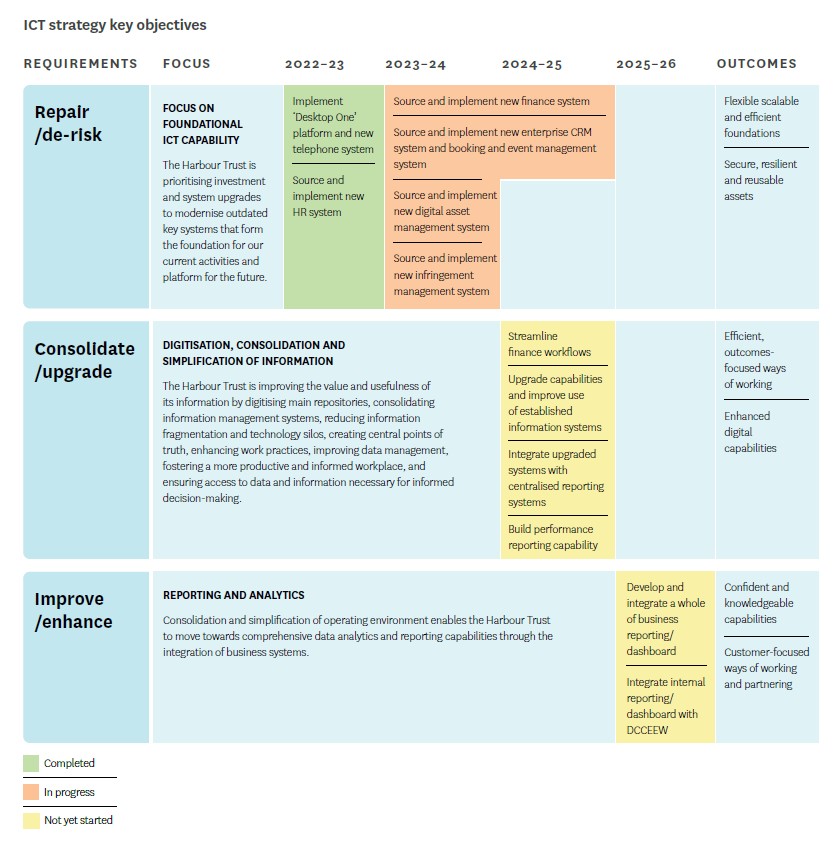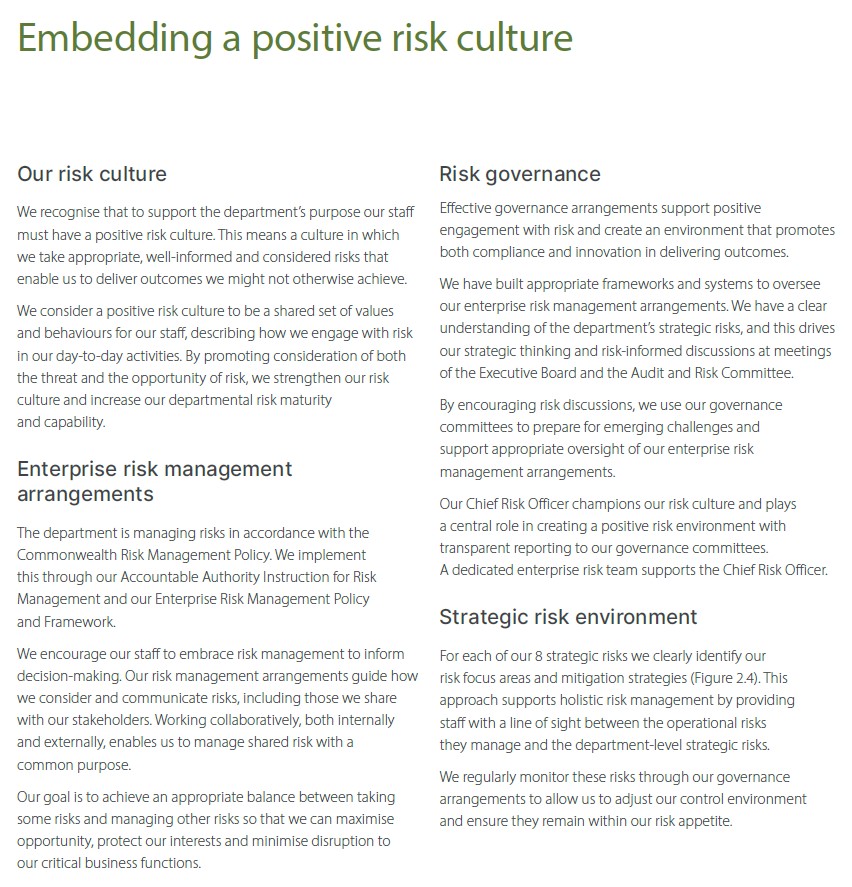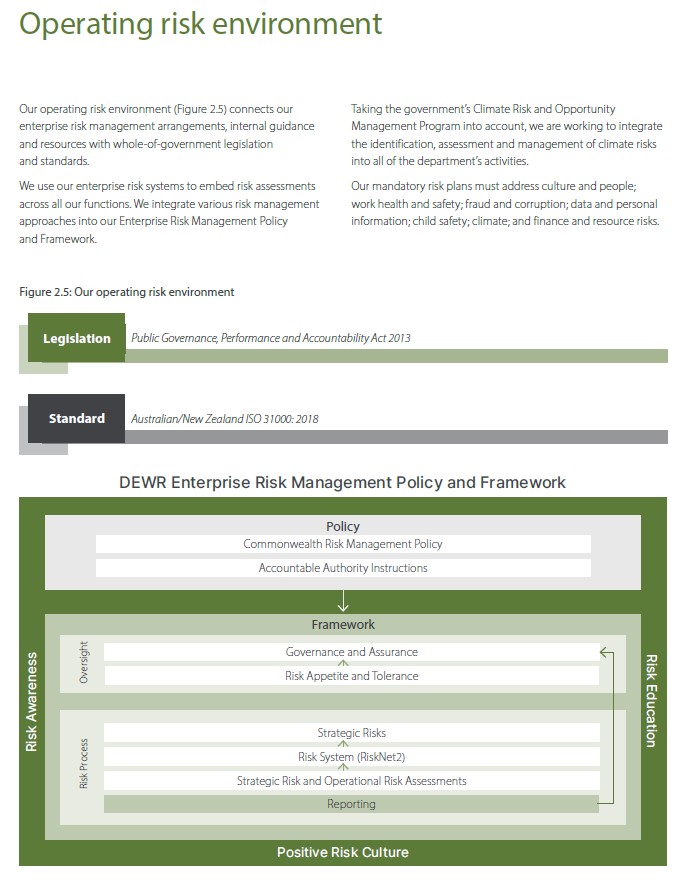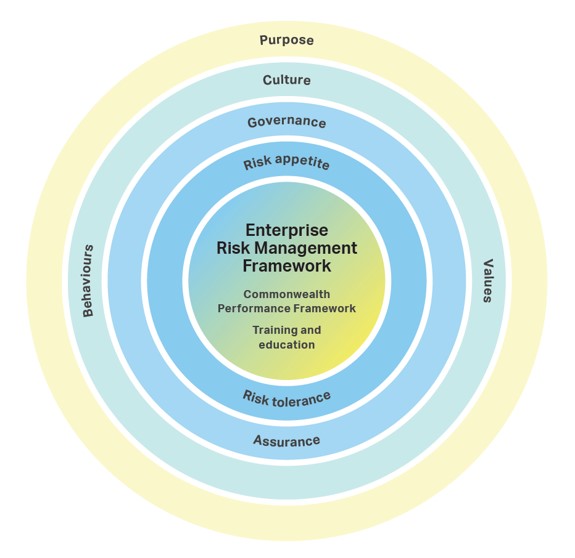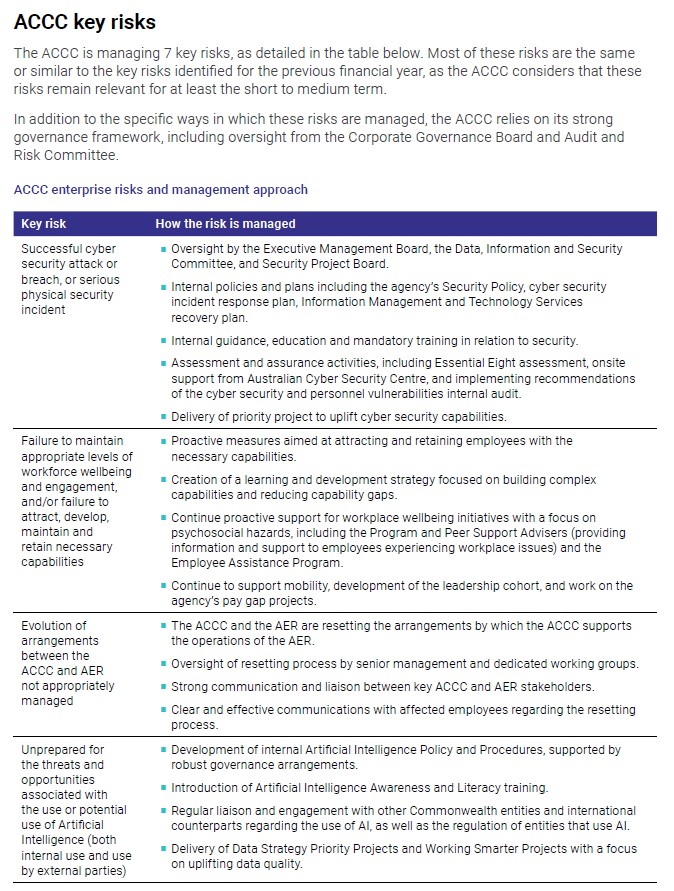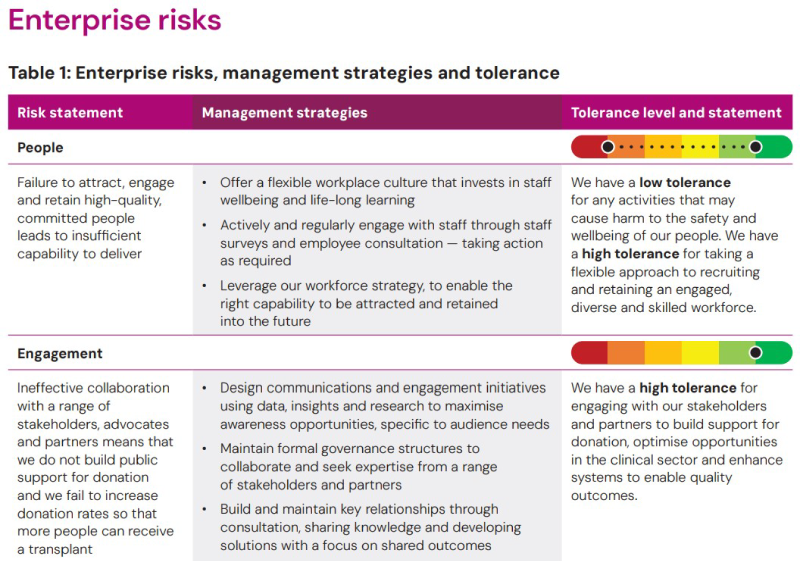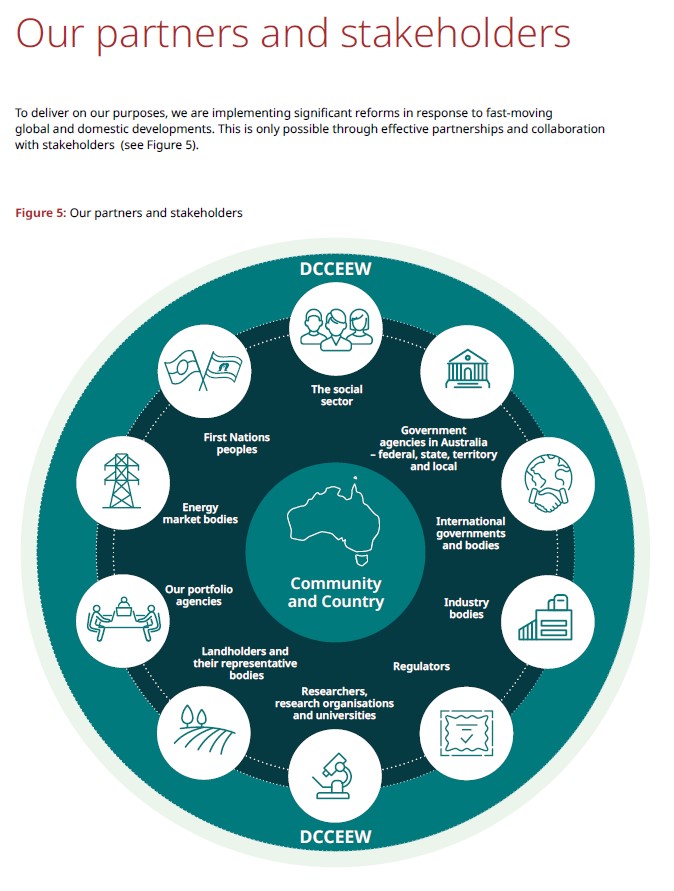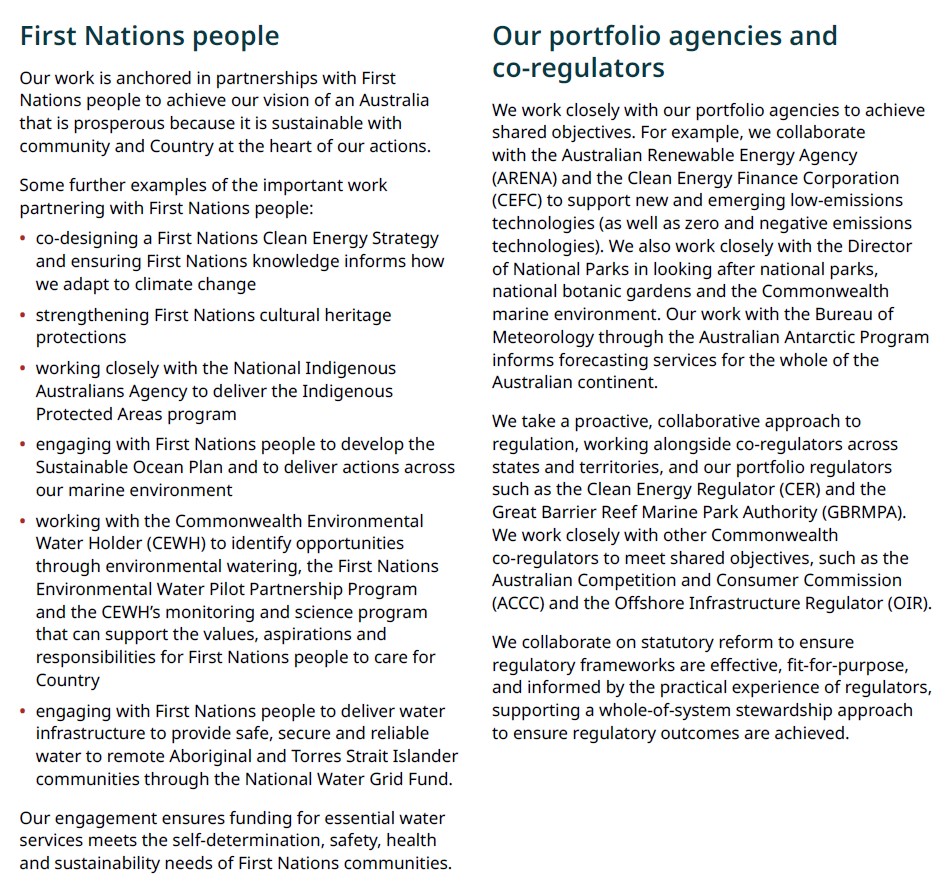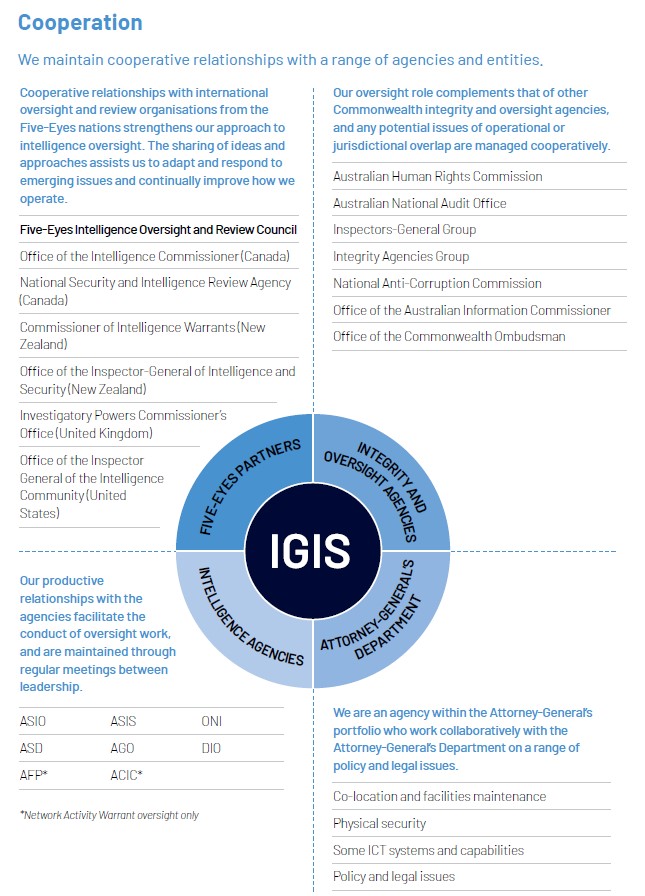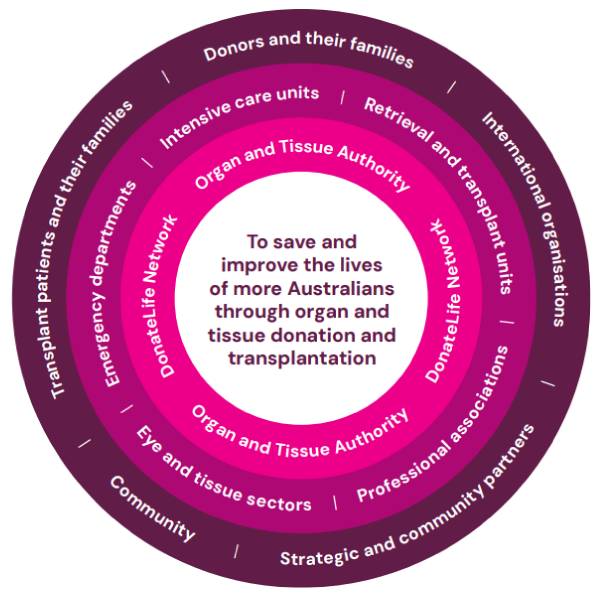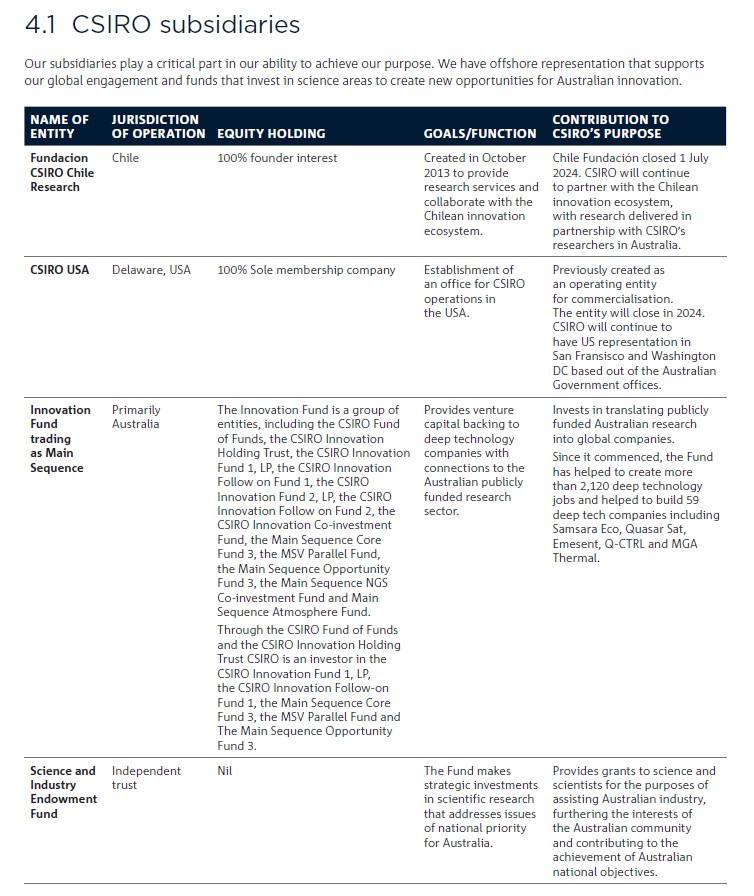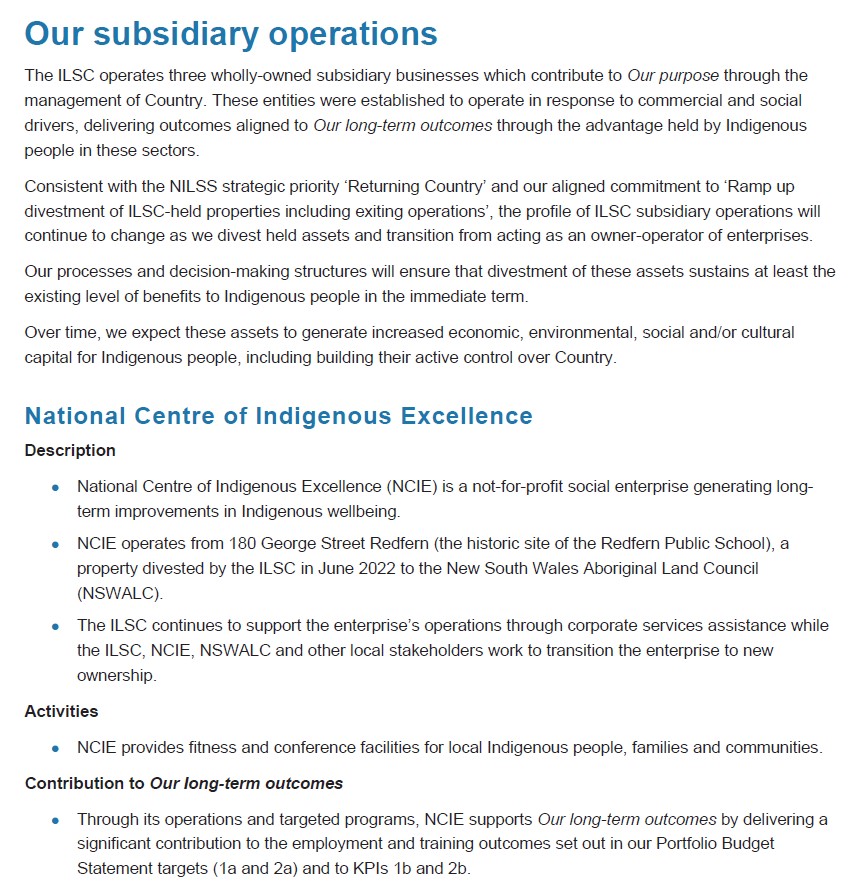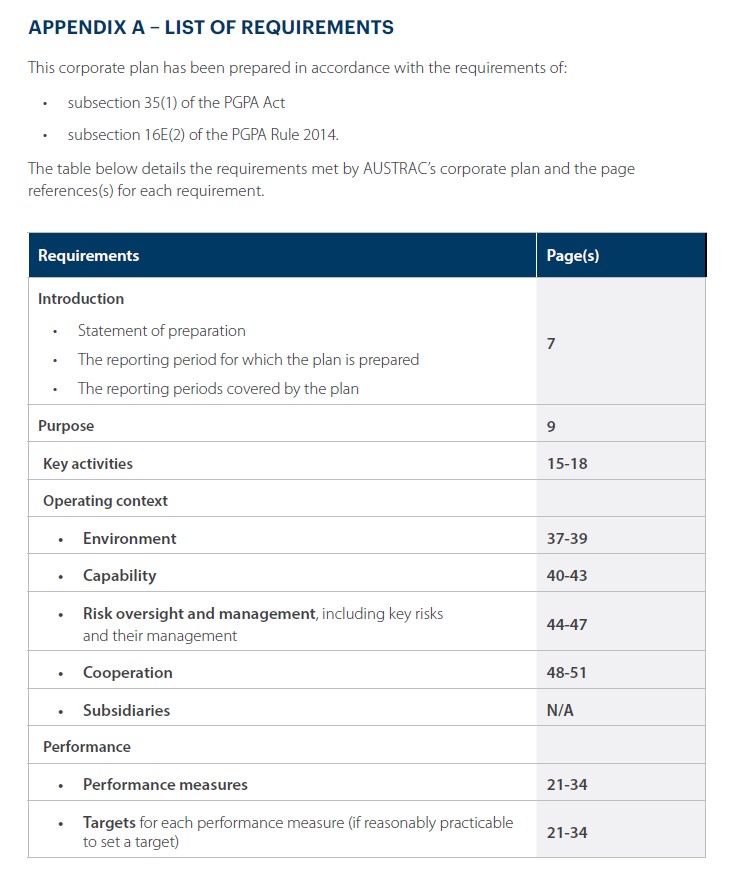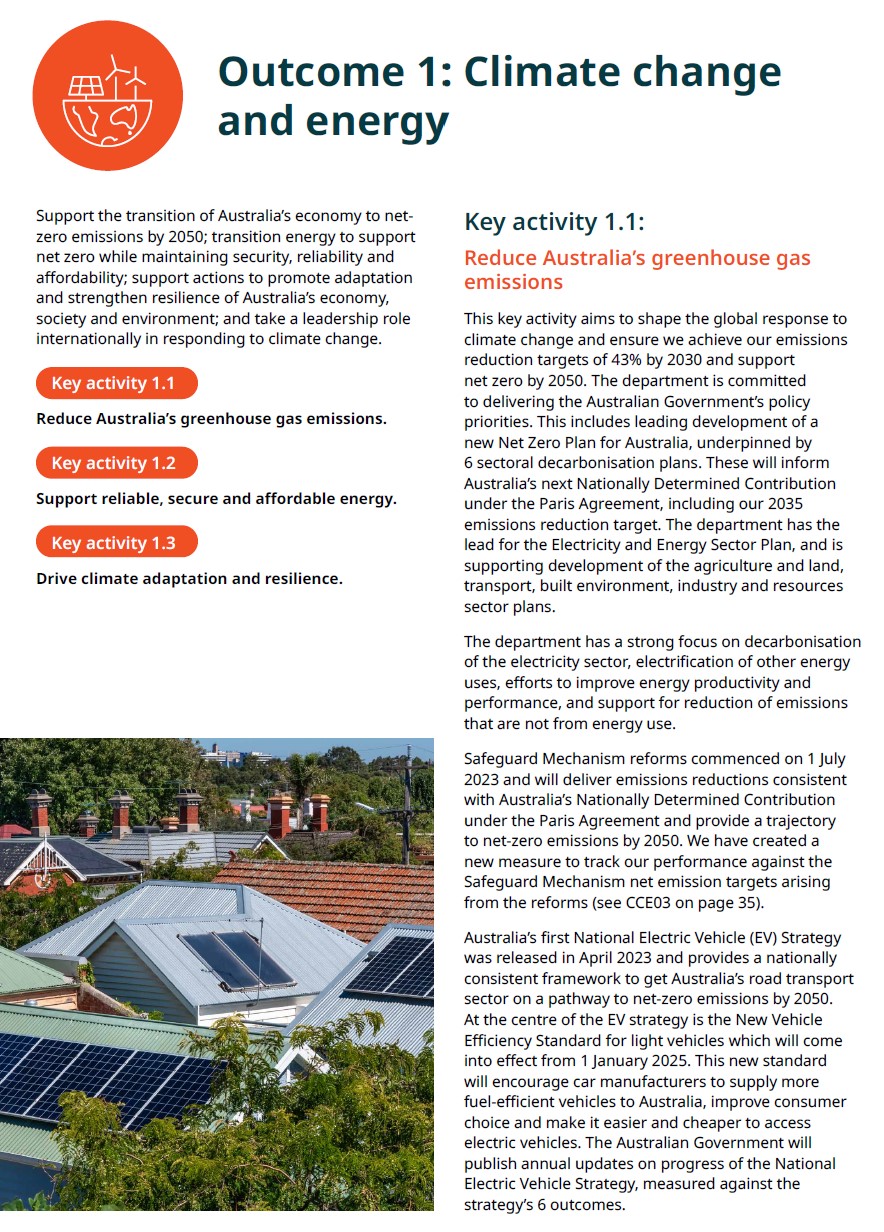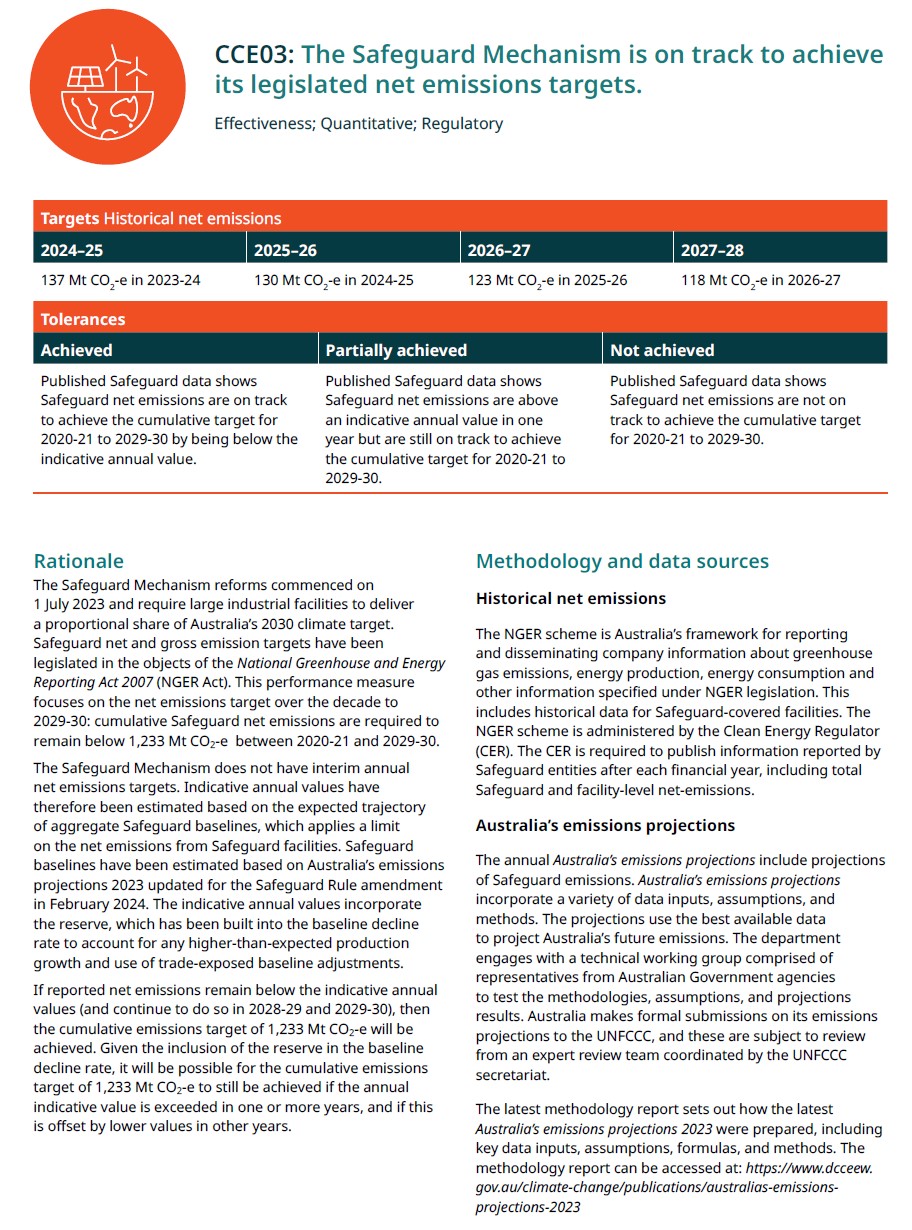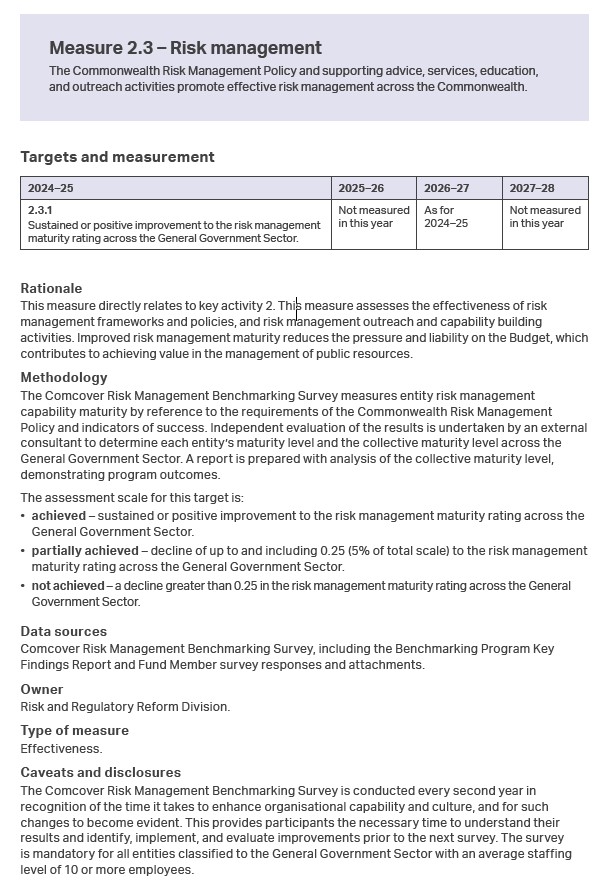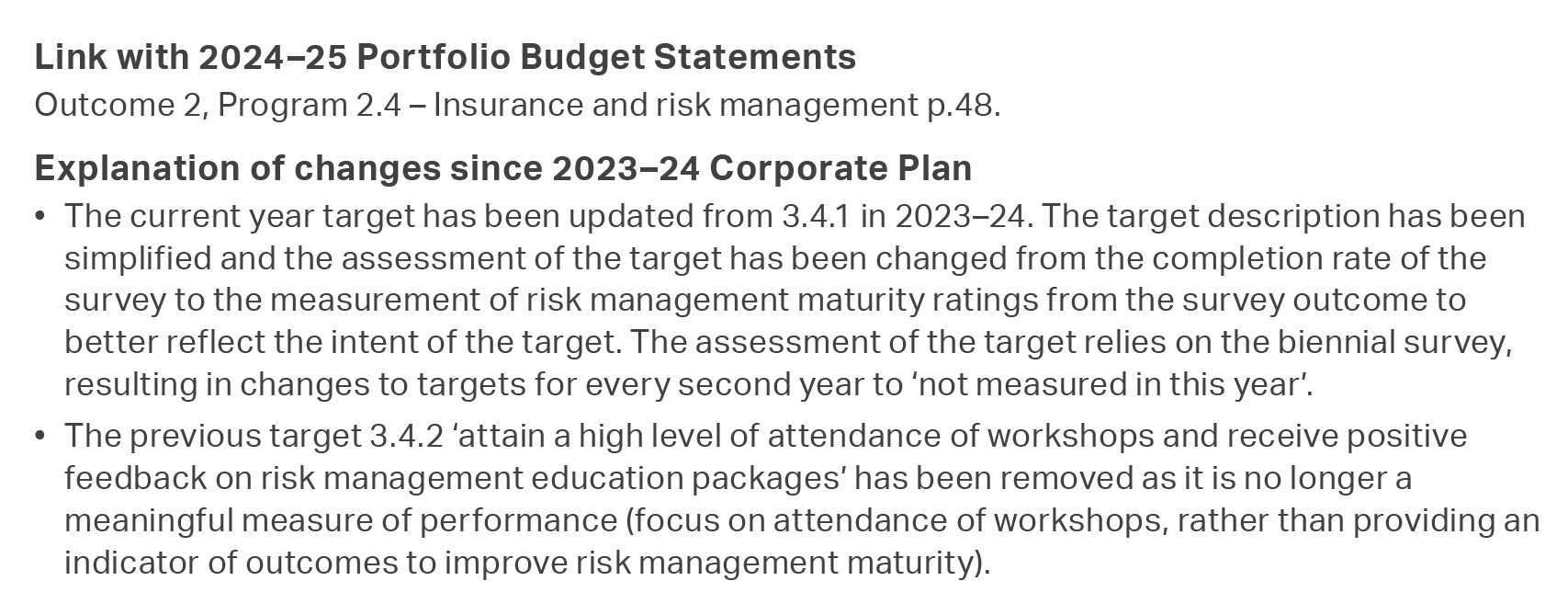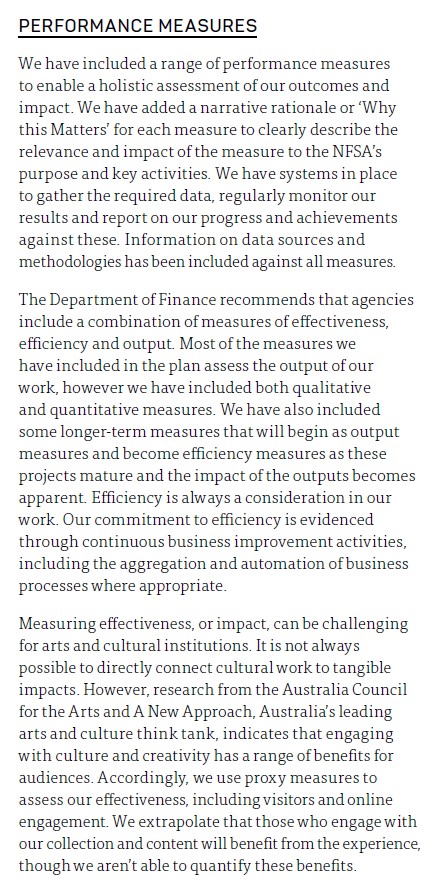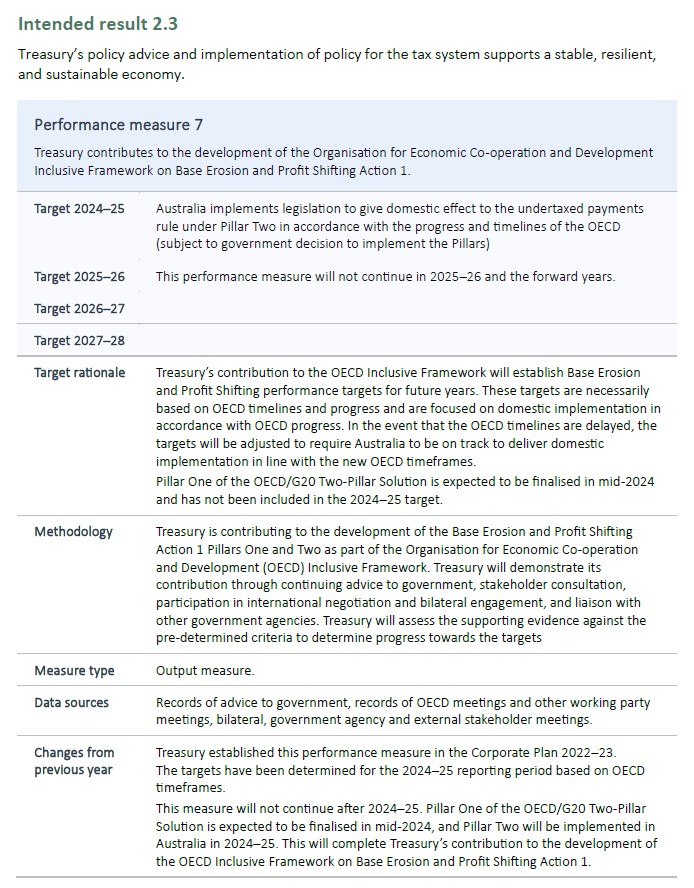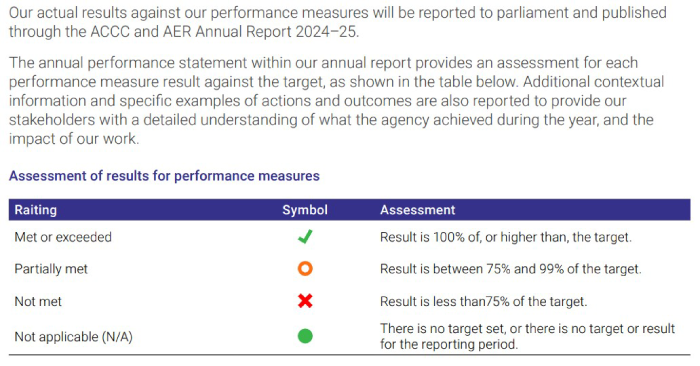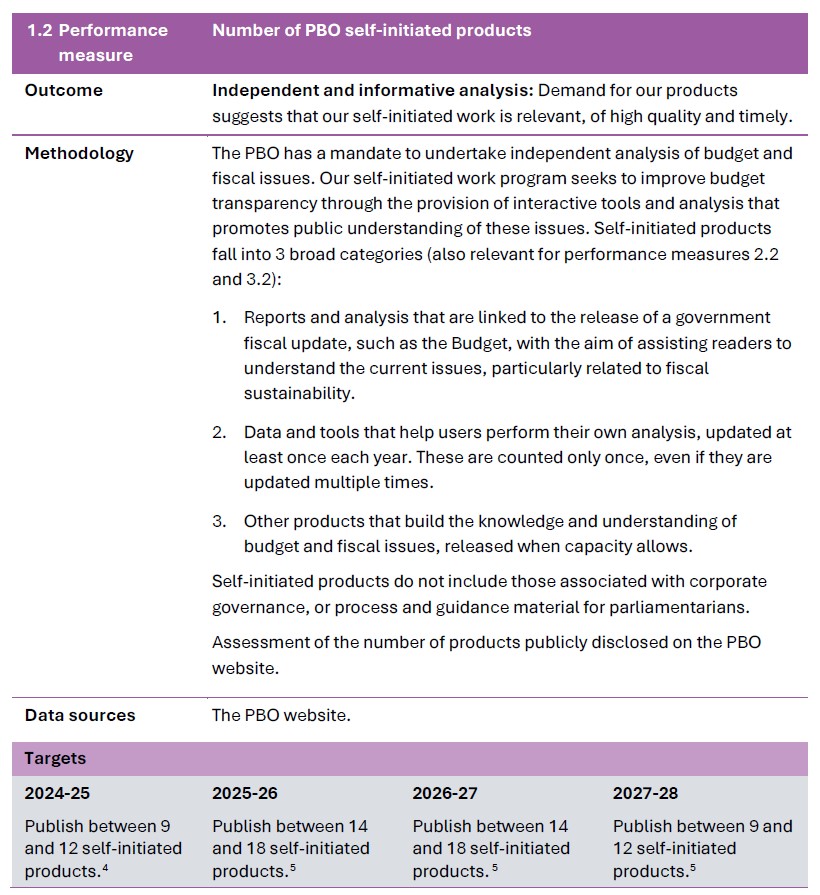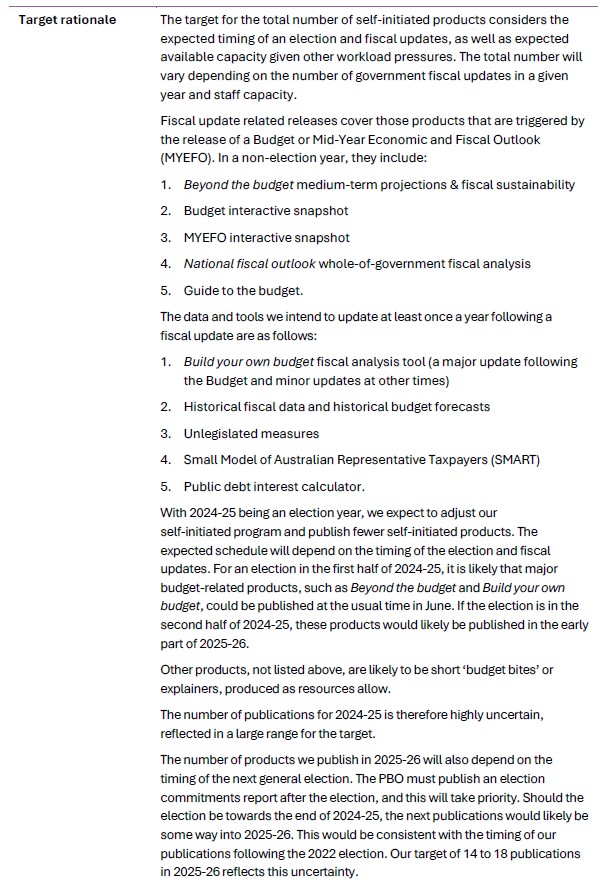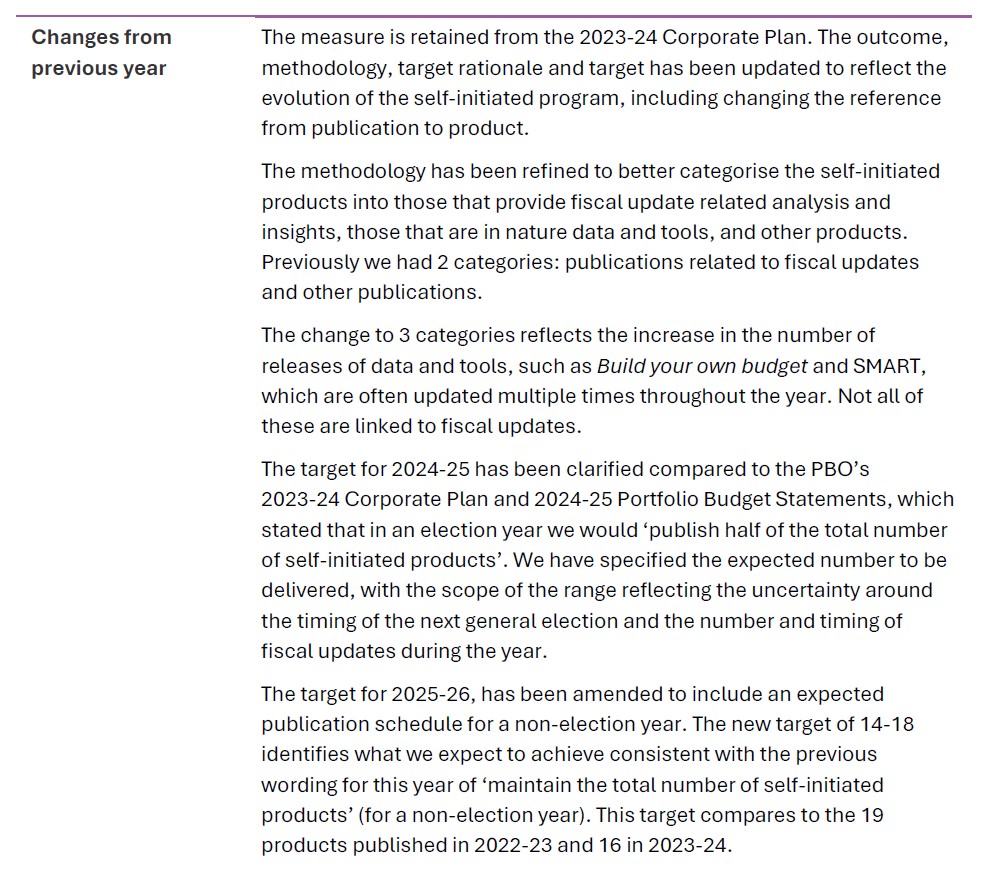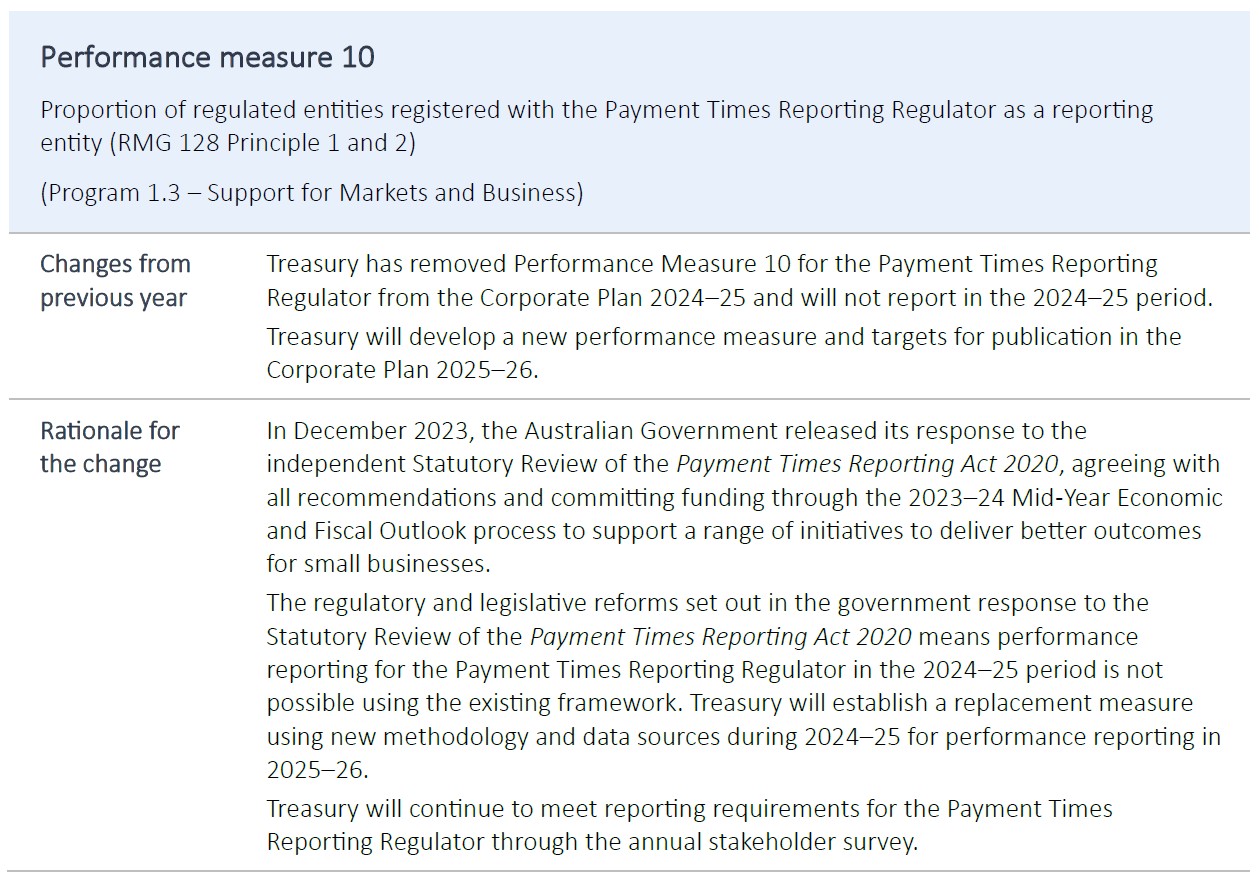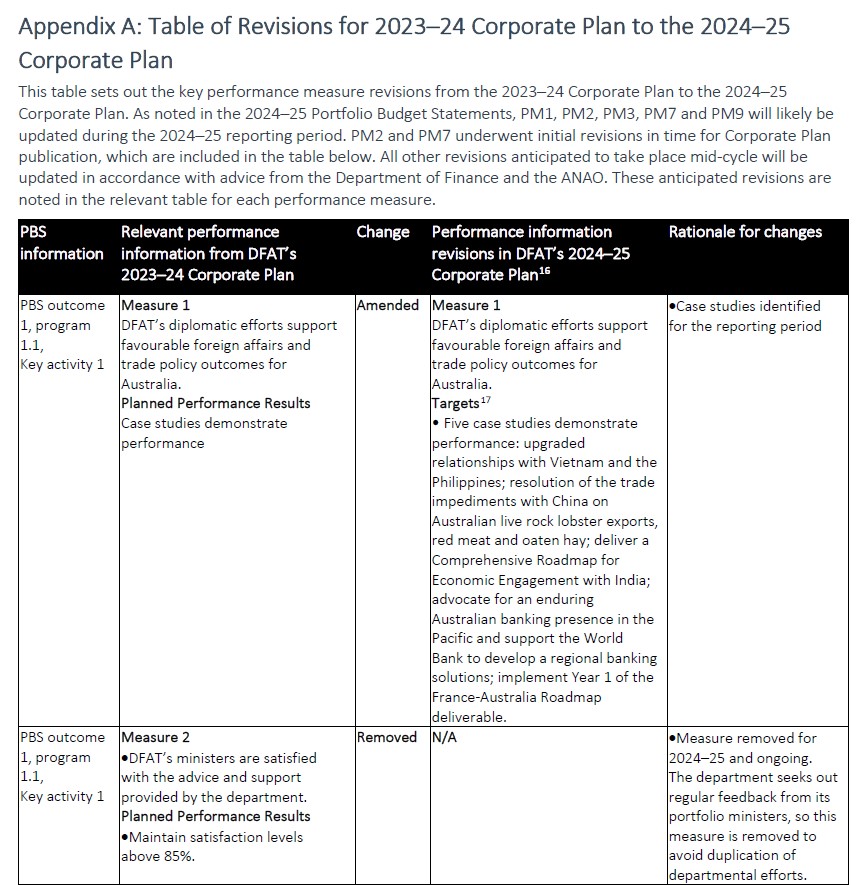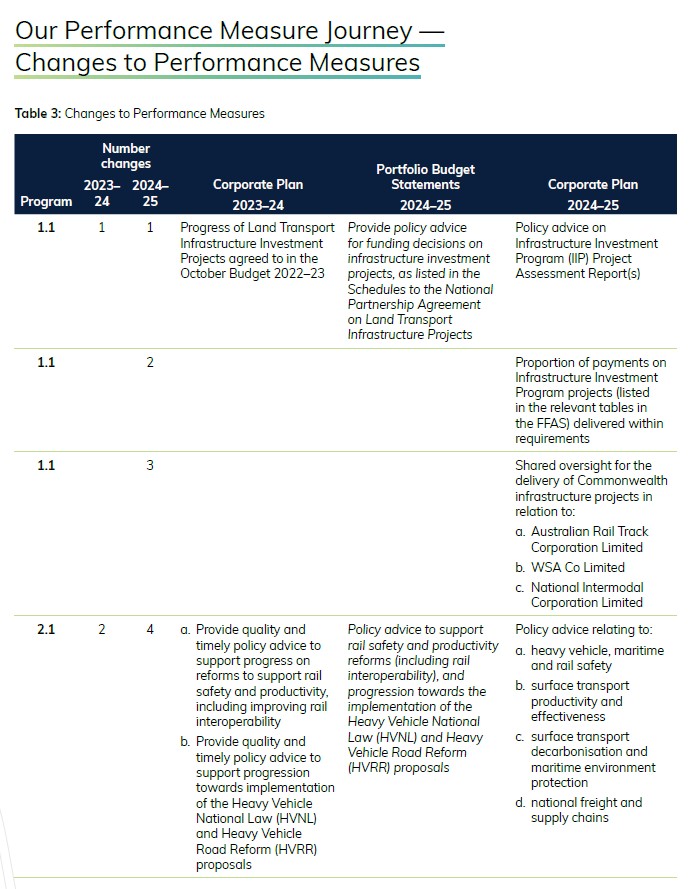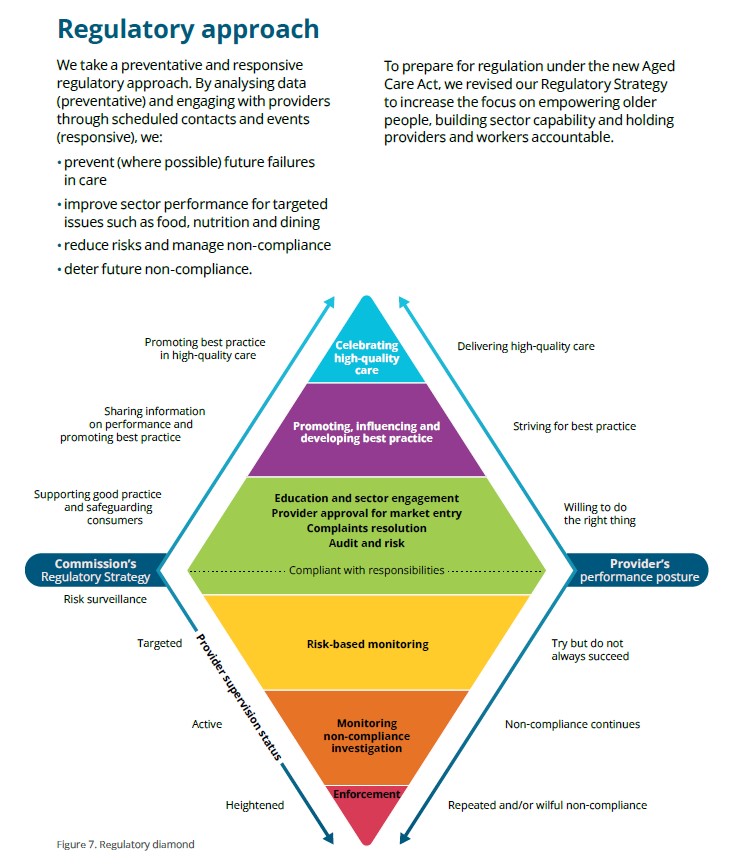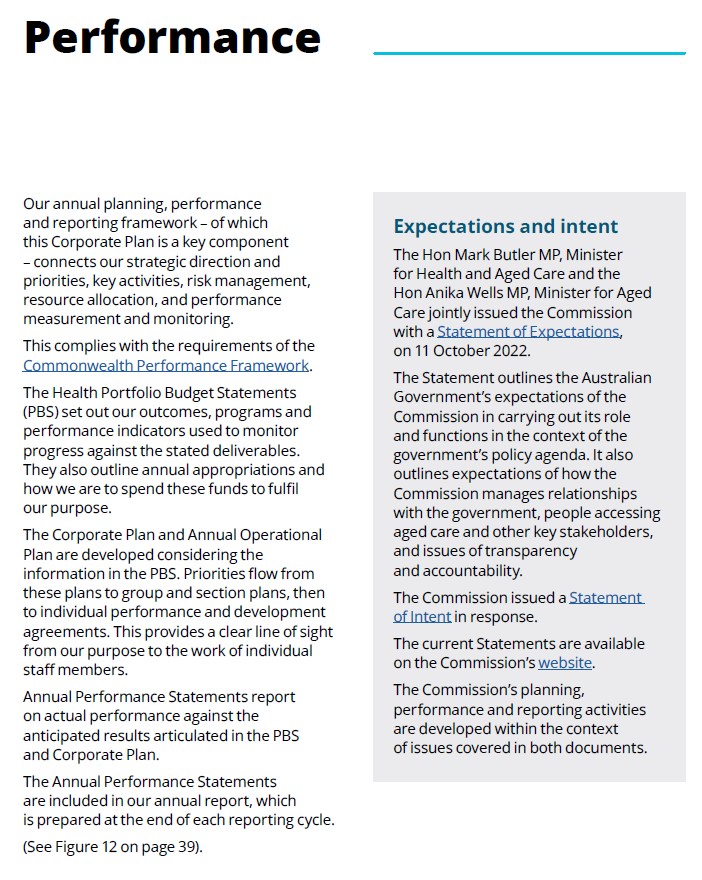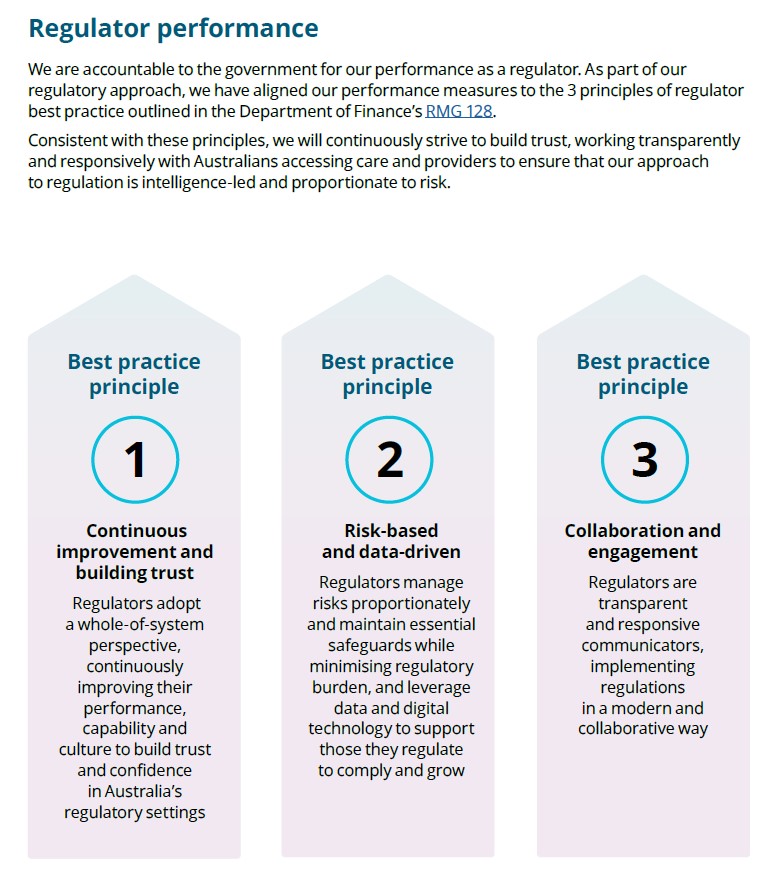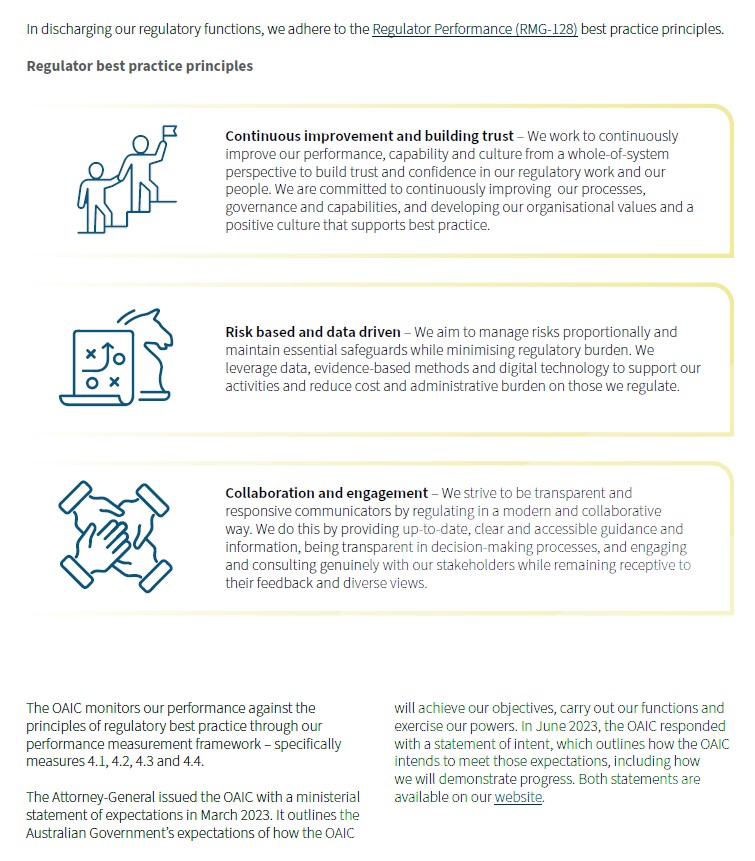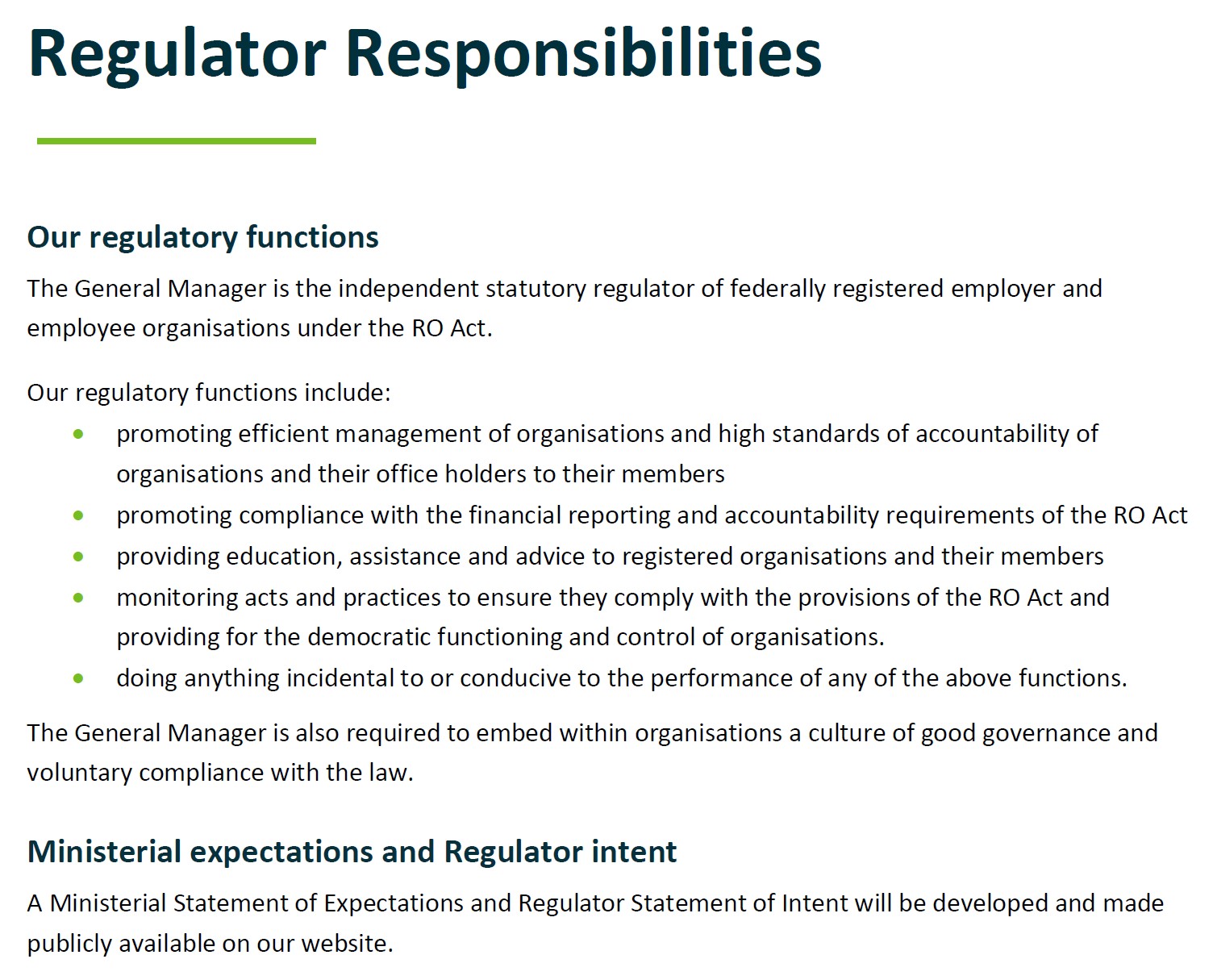Below is a collection of better practice examples from a range of non-corporate and corporate Commonwealth entities in accordance with the Public Governance, Performance and Accountability Act 2013 (PGPA Act) and Public Governance, Performance and Accountability Rule 2014 (PGPA Rule) for each of the following corporate plan requirements:
- Introduction
- Purposes
- Key activities
- Environment
- Capability
- Risk
- Cooperation
- Subsidiaries
- Performance information
- Reporting targets
- Reporting changes to performance measures
- Regulator performance
2024–25 Office of the Inspector-General of Intelligence and Security Corporate Plan (page 1)
The Office of the Inspector-General of Intelligence and Security’s Introduction sets out the plan’s reporting period, the reporting periods covered by the plan and that the plan is prepared under paragraph 35(1)(b) of the PGPA Act, in accordance with section 16E(2) item 1 of the PGPA Rule.
2024–25 Export Finance Australia Corporate Plan (page 3)
Export Finance Australia’s Introduction sets out the plan’s reporting period, the reporting periods covered by the plan and that the plan is prepared under paragraph 35(1)(b) of the PGPA Act, in accordance with section 16E(2) item 1 of the PGPA Rule. The Introduction also refers to the relevant requirements under its entity’s enabling legislation.
2024–25 Department of Education Corporate Plan (page 8)
The Department of Education’s purpose statement clearly sets out and describes its purpose – why we are here.
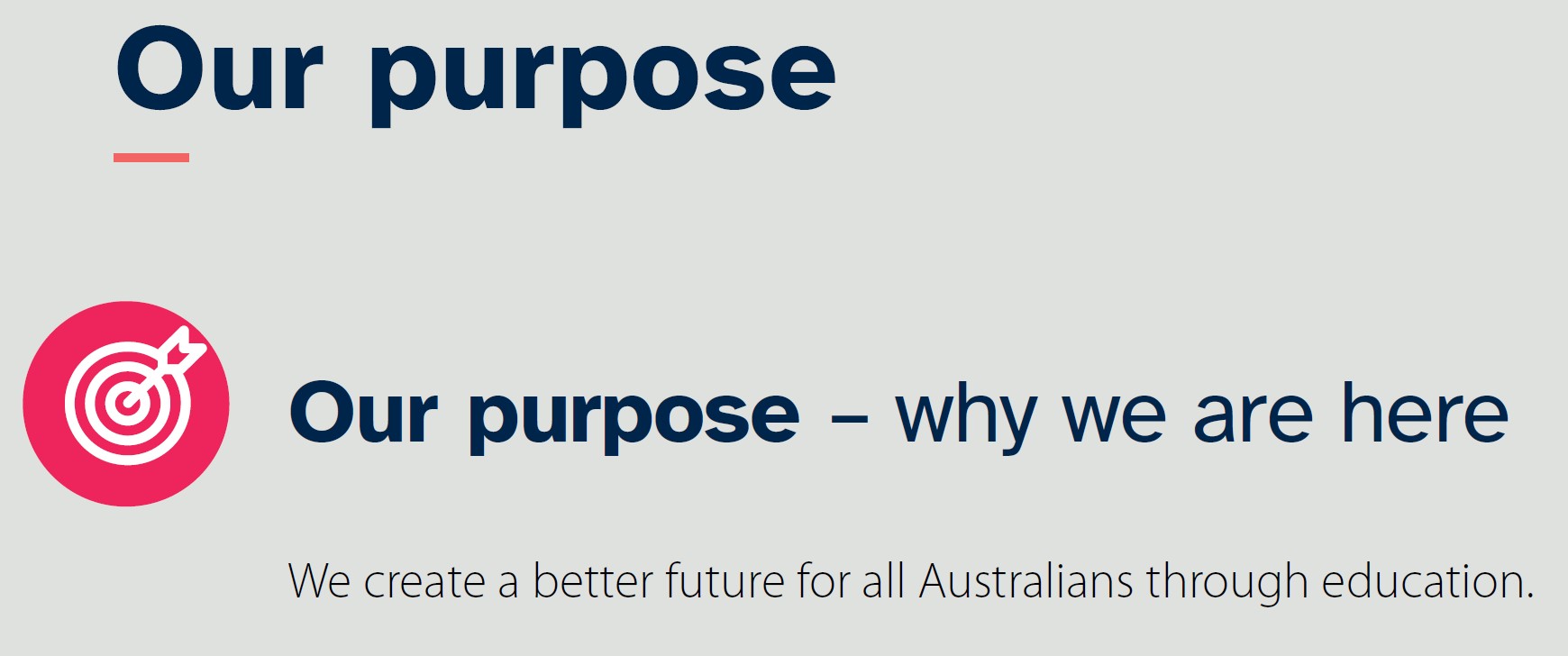
Source: Department of Education Corporate Plan 2024–25
2024–25 Clean Energy Finance Corporation Corporate Plan (page 4)
The Clean Energy Finance Corporation’s plan describes how its purpose is defined under its enabling legislation.
2024–25 Seafarers Safety, Rehabilitation and Compensation Authority Corporate Plan (page 3)
The Seafarers Safety, Rehabilitation and Compensation Authority’s plan describes its 2 purposes as derived from its functions and powers under its enabling legislation.
2024–25 Defence Housing Australia Statement of Corporate Intent (page 2 of 67)
Defence Housing Australia’s plan clearly describes its purpose through a purpose statement.
Source: Defence Housing Australia Statement of Corporate Intent 2024–25
2024–25 Office of the Special Investigator Corporate Plan (page 7)
The Office of the Special Investigator’s plan clearly states that it undertakes 3 key activities to achieve its purpose which is outlined directly above demonstrating the link between purposes and key activities.
2024–25 Office of the Australian Information Commissioner Corporate Plan (page 9)
The Office of the Australian Information Commissioner’s plan clearly identifies its key activities and provides a detailed description of each directly below.
2024–25 Services Australia Corporate Plan (page 6)
Services Australia’s plan includes a strategic snapshot (plan on a page) which includes its purpose and outcome statement, and illustrates the relationship between its programs, key activities and performance measures.
2024–25 Department of the Prime Minister and Cabinet Corporate Plan (page 4)
The Department of the Prime Minister and Cabinet’s plan includes a plan on a page which includes its purpose, outcome statement and program, and illustrates the relationship between its 3 key activities and performance measures.
2024–25 Department of Foreign Affairs and Trade Corporate Plan (November 2024) (page 10)
The Department of Foreign Affairs and Trade’s plan discusses the challenges that may impact its environment and how it intends to respond.
2024–25 Australia Electoral Commission Corporate Plan (page 4)
The Australian Electoral Commission’s plan includes a detailed discussion of the challenges, trends and factors which influence its environment and how it intends to respond.
2024–25 Special Broadcasting Service Corporation Corporate Plan (pages 11–12)
The Special Broadcasting Service Corporation’s plan describes its environment, recognising how it needs to continue to evolve to meet the needs of its audiences through the lens of such things as Australia’s annual population change, net overseas migration and top 5 countries of birth.
2024–25 Office of the Commonwealth Ombudsman Corporate Plan (pages 24–25)
The Office of the Commonwealth Ombudsman’s plan adopts a thematic approach to discussing its capability needs, linking back to its ability to achieve its purpose, with general strategies and a 4-year projection.
2024–25 Australia Electoral Commission Corporate Plan (pages 10–11)
The Australian Electoral Commission’s plan discuss the strategies and plans as they relate to their unique people, election and ICT capability needs.
2024–25 Bureau of Meteorology Corporate Plan (page 20)
The Bureau of Meteorology (the Bureau) adopts a thematic approach to discussing its capability needs and plans to improve and maintain capability, characterising 4 enterprise capabilities. This is followed by a discussion of the strategy related to each enterprise capability, including a description of each of the capabilities, an assessment of current capability, what capability the Bureau aims to have and a capability development pathway.
2024–25 Sydney Harbour Federation Trust Corporate Plan (page 11)
The Sydney Harbour Federation Trust’s plan includes details on its strategic approach to transform its information, communications and technology capabilities, including an illustration of its delivery against its 4-year ICT strategy.
2024–25 Department of Employment and Workplace Relations Corporate Plan (pages 24 and 28)
The Department of Employment and Workplace Relations’ plan summarises its risk oversight and management systems, linking it back to its purpose, and includes an illustration of its operating enterprise risk management policy and framework.
2024–25 Department of Finance Corporate Plan (page 10)
The Department of Finance’s plan includes an overview of its enterprise risk management arrangements which links back to its purpose.
2024–25 Australian Competition and Consumer Commission Corporate Plan (page 10)
The Australian Competition and Consumer Commission’s plan clearly identifies its key risks and how each key risk is managed.
2024–25 Australian Organ and Tissue Donation and Transplantation Authority Corporate Plan (page 17)
The Australian Organ and Tissue Donation and Transplantation Authority’s plan clearly identifies its enterprise (key) risks, management strategies, and tolerance level and statement.
2024–25 Department of Climate Change, Energy, the Environment and Water Corporate Plan (pages 25–26)
The Department of Climate Change, Energy, the Environment and Water’s plan describes how it delivers on its purpose through its cooperation, illustrating its partners and stakeholders, and provides detailed examples of the key contributions.
2024–25 Murray-Darling Basin Authority Corporate Plan (page 38)
The Murray-Darling Basin Authority (MDBA) clearly illustrate their key partners: Communities, Advisory groups, Government, Research organisations, and Industry. MDBA also identify the key partners within each group.
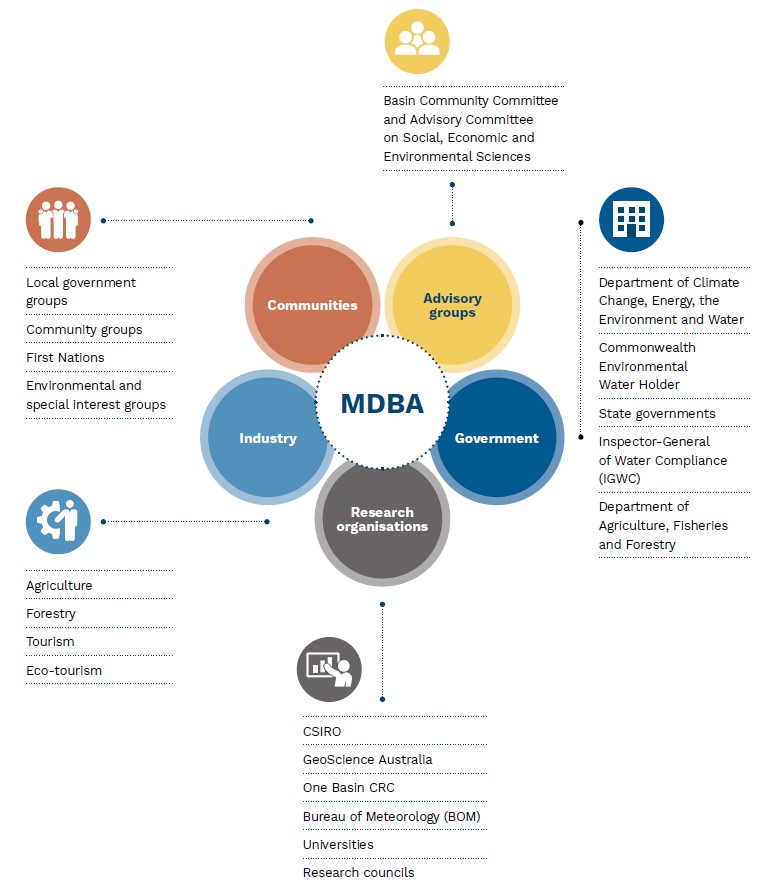
2024–25 Office of the Inspector-General of Intelligence and Security Corporate Plan (page 13)
The Office of the Inspector-General of Intelligence and Security’s plan outlines its cooperation in 4 key groups, with a description below and examples of the agencies and entities under each grouping.
2024–25 Australian Organ and Tissue Donation and Transplantation Authority Corporate Plan (page 11)
The Australian Organ and Tissue Donation and Transplantation Authority’s plan includes an illustration of its collaboration environment with its purpose at the centre, showing the link between cooperation and how it helps to achieve its purpose.
2024–25 CSIRO Strategy Corporate Plan (page 26)
The Commonwealth Scientific and Industrial Research Organisation (CSIRO) clearly identify its subsidiaries and their contribution to CSIRO’s purpose. CSIRO also outlines its subsidiaries’ jurisdiction of operation, equity holding, and goals and functions for additional context.
2024–25 Indigenous Land and Sea Corporation Corporate Plan (page 30)
The Indigenous Land and Sea Corporation’s plan provides the reader with a clear understanding of why the entity has subsidiaries, who the subsidiaries are and what they do, and how they contribute to its purposes.
2024–25 Administrative Review Tribunal Corporate Plan (page 15)
The Australian Review Tribunal’s plan makes it clear that they do not have any subsidiaries through the use of a readily identifiable heading, and a short and to the point statement.
2024–25 Australian Transaction Reports and Analysis Centre Corporate Plan (page 53)
Australian Transaction Reports and Analysis Centre's (AUSTRAC) plan uses its list of requirements to indicate it does not have any subsidiaries, by stating ‘N/A’ against the subsidiary required element.
2024–25 Department of Climate Change, Energy, the Environment and Water Corporate Plan (pages 32 and 35–36)
The Department of Climate Change, Energy, the Environment and Water’s plan outlines its outcome statement, and the related key activities and performance measures. The performance information includes the measure type, targets for each of the 4 reporting periods covered by the plan, and defines tolerances for ‘Achieved’, ‘Partially achieved’ and ‘Not achieved’ specific to the measure. It also includes a rationale, methodology and data sources, Portfolio Budget Statement linkage, outputs and alignment with principles of regulatory best practice.
2024–25 Department of Finance Corporate Plan (pages 31–32)
The Department of Finance’s plan introduces its performance measures by outcome and key activities. The performance information under measure 2.3 clearly sets out the targets directly below the measure for each reporting period covered by the plan. The performance information also includes a rationale, methodology, assessment scale, data sources, measure owner, type of measure, caveats and disclosures, a link to the Portfolio Budget Statements and an explanation of changes since the previous corporate plan.
2024–25 National Film and Sound Archive of Australia Corporate Plan (page 18)
The National Film and Sound Archive of Australia (NFSA) acknowledge that measuring effectiveness, or impact, can be challenging for arts and cultural institutions. The NFSA discuss how they use proxy measures to measure its effectiveness. The NFSA do this through measuring visitors and online engagement, as research indicates that engaging with culture and creativity has a range of benefits for audiences.
2024–25 Department of the Treasury Corporate Plan (page 18)
The Department of the Treasury’s plan includes a target rationale for the 2024–25 reporting period. The plan also clearly explains why there are no targets for the 2025–26 reporting year and onwards as the performance measure will not continue in 2025–26 and the forward years. The rationale is further explained under the ‘Changes from previous year’ field.
2024–25 Australian Competition and Consumer Commission Corporate Plan (page 16 and 67)
The Australian Competition and Consumer Commission’s plan outlines under its assessment of results for performance measures table that for some performance measures there is no target set. Performance measure 4.4 has no target and a rationale is set out under the measure.
2024–25 Parliamentary Budget Office Corporate Plan (Pages 20–22)
The Parliamentary Budget Office’s plan includes detailed descriptions of the changes to performance measures from the previous year and a rationale for each change. The performance measures are numbered, with measure outcomes, methodology, data sources, targets across the 4 reporting periods and detailed target rationales.
2024–25 Department of the Treasury Corporate Plan (page 21)
The Department of the Treasury’s plan includes a detailed description of the decision to remove a performance measure and a detailed rationale for the decision.
2024–25 Department of Foreign Affairs and Trade Corporate Plan (November 2024) (page 38)
The Department of Foreign Affairs and Trade’s plan includes a table of revisions to its performance measures between reporting periods, including the related PBS outcome and program and key activity, and a description and rationale for each change.
The Department of Infrastructure, Transport, Regional Development, Communications and the Arts’ plan includes a table setting out changes to performance measures. The table enables a side-by-side comparison of any changes to the measures both between and within reporting periods.
2024–25 Aged Care Quality and Safety Commission Corporate Plan (pages 29, 38 and 42)
The Aged Care Quality and Safety Commission’s plan clearly outlines its regulatory approach, includes a link to its Statements of Expectations and Intent, and includes the regulator best practice principles.
2024–25 Office of the Australian Information Commissioner Corporate Plan (page 18)
The Office of the Australian Information Commissioner’s plan clearly references the regulator best practice principles, its regulatory performance measures and a includes a link to its Statements of Expectations and Intent.
2024–25 Fair Work Commission Corporate Plan (page 15)
The Fair Work Commission’s plan clearly describes its regulatory functions and states that the ministerial expectations and statement of intent will be made publicly available on its website.


